The $12 Million Stuffed Shark: The Curious Economics of Contemporary Art
Don Thompson
Why would a smart New York investment banker pay $12 million for the decaying, stuffed carcass of a shark? By what alchemy does Jackson Pollock’s drip painting No. 5, 1948 sell for $140 million?
Intriguing and entertaining, The $12 Million Stuffed Shark is a Freakonomics approach to the economics and psychology of the contemporary art world. Why were record prices achieved at auction for works by 131 contemporary artists in 2006 alone, with astonishing new heights reached in 2007? Don Thompson explores the money, lust, and self-aggrandizement of the art world in an attempt to determine what makes a particular work valuable while others are ignored.
This book is the first to look at the economics and the marketing strategies that enable the modern art market to generate such astronomical prices. Drawing on interviews with past and present executives of auction houses and art dealerships, artists, and the buyers who move the market, Thompson launches the reader on a journey of discovery through the peculiar world of modern art. Surprising, passionate, gossipy, revelatory, The $12 Million Stuffed Shark reveals a great deal that even experienced auction purchasers do not know.
5,000 Feet Is the Best
Omer Fast, T. J. Demos, Liz Kotz, David Rohde, Milena Hoegsberg, Melanie O'Brian
Drone surveillance in modern warfare,that is, the use of unmanned planes operated by pilots on the ground is of paramount significance to Omer Fast. Focusing a single cinematic video work of Fasts, 5,000 Feet is the Best 2011, the publication bridges the gap between a critical reader and an artist s book. Produced to accompany two solo exhibitions in Oslo and Toronto, it includes texts from art historians Liz Kotz and T. J. Demos, an article on drones from the journal Foreign Policy, and the artist s research set alongside film stills. An email thread between practitioners active in different fields opens the conversation into a forum on politics, ethics, aesthetics, and human experience.
30 Americans
Franklin Sirmans, Glenn Ligon, Robert Hobbs, Michele Wallace
From its inception in the 1960s, the Rubell Collection has been able to boast a particularly fine range of African-American art. Recent New York exhibitions inspired the Rubell family to mount an exhibition of their holdings in this area, reproduced here in 30 Americans. With a late addition to this exhibition, there are in fact 31 artists: Nina Chanel Abney, John Bankston, Jean-Michel Basquiat, Mark Bradford, Iona Rozeal Brown, Nick Cave, Robert Colescott, Noah Davis, Leonard Drew, Renée Green, David Hammons, Barkley L. Hendricks, Rashid Johnson, Glenn Ligon, Kalup Linzy, Kerry James Marshall, Rodney McMillian, Wangechi Mutu, William Pope L., Gary Simmons, Xaviera Simmons, Lorna Simpson, Shinque Smith, Jeff Sonhouse, Henry Taylor, Hank Willis Thomas, Mickalene Thomas, Kara Walker, Carrie Mae Weems, Kehinde Wiley and Purvis Young. This expanded second edition of the catalogue features additional color plates and an updated design.
100 Artists' Manifestos
Alex Danchev
About Looking
John Berger
As a novelist, art critic, and cultural historian, John Berger is a writer of dazzling eloquence and arresting insight whose work amounts to a subtle, powerful critique of the canons of our civilization. In About Looking he explores our role as observers to reveal new layers of meaning in what we see. How do the animals we look at in zoos remind us of a relationship between man and beast all but lost in the twentieth century? What is it about looking at war photographs that doubles their already potent violence? How do the nudes of Rodin betray the threats to his authority and potency posed by clay and flesh? And how does solitude inform the art of Giacometti? In asking these and other questions, Berger quietly — but fundamentally — alters the vision of anyone who reads his work.
About Looking
John Berger
As a novelist, art critic, and cultural historian, John Berger is a writer of dazzling eloquence and arresting insight whose work amounts to a subtle, powerful critique of the canons of our civilization. In About Looking he explores our role as observers to reveal new layers of meaning in what we see. How do the animals we look at in zoos remind us of a relationship between man and beast all but lost in the twentieth century? What is it about looking at war photographs that doubles their already potent violence? How do the nudes of Rodin betray the threats to his authority and potency posed by clay and flesh? And how does solitude inform the art of Giacometti? In asking these and other questions, Berger quietly — but fundamentally — alters the vision of anyone who reads his work.
Achieving Photographic Style
MICHAEL FREEMAN
African Sculpture
Ladislas Segy
After Modern Art 1945-2000
David Hopkins
Modern and contemporary art can be both baffling and beautiful; it can also be innovative, political, and disturbing. This book sets out to provide the first concise interpretation of the period as a whole, clarifying the artists and their works along the way. Closely informed by new critical approaches, it concentrates on the relationship between American and European art from the end of the Second World War to the eve of the new millennium.
Jackson Pollock, Jasper Johns, Yves Klein, Andy Warhol, Louise Bourgeois, Cindy Sherman, and Damien Hirst are among many artists discussed, with careful attention being given to the political and cultural worlds they inhabited. Moving along a clear timeline, the author highlights key movements such as Abstract Expressionism, Pop Art, Minimalism, Conceptualism, Postmodernism, and performance art to explain the theoretical and issue-based debates that have provided the engine for the art of this period.
After the End of Art: Contemporary Art and the Pale of History
Arthur Coleman Danto
Over a decade ago, Arthur Danto announced that art ended in the sixties. Ever since this declaration, he has been at the forefront of a radical critique of the nature of art in our time. "After the End of Art presents Danto's first full-scale reformulation of his original insight, showing how, with the eclipse of abstract expressionism, art has deviated irrevocably from the narrative course that Vasari helped define for it in the Renaissance. Moreover, he leads the way to a new type of criticism that can help us understand art in a posthistorical age where, for example, an artist can produce a work in the style of Rembrandt to create a visual pun, and where traditional theories cannot explain the difference between Andy Warhol's Brillo Box and the product found in the grocery store. Here we are engaged in a series of insightful and entertaining conversations on the most relevant aesthetic and philosophical issues of art, conducted by an especially acute observer of the art scene today.
Originally delivered as the prestigious Mellon Lectures on the Fine Arts, these writings cover art history, pop art, "people's art, " the future role of museums, and the critical contributions of Clement Greenberg—who helped make sense of modernism for viewers over two generations ago through an aesthetics-based criticism. Tracing art history from a mimetic tradition (the idea that art was a progressively more adequate representation of reality) through the modern era of manifestos (when art was defined by the artist's philosophy), Danto shows that it wasn't until the invention of Pop art that the historical understanding of the means and ends of art was nullified. Even modernist art, which tried tobreak with the past by questioning the ways of producing art, hinged on a narrative.
Traditional notions of aesthetics can no longer apply to contemporary art, argues Danto. Instead he focuses on a philosophy of art criticism that can deal with perhaps the most perplexing feature of contemporary art: that everything is possible.
Ai Weiwei's Blog: Writings, Interviews, and Digital Rants, 2006-2009
Ai Weiwei, Lee Ambrozy
In 2006, even though he could barely type, China's most famous artist started blogging. For more than three years, Ai Weiwei turned out a steady stream of scathing social commentary, criticism of government policy, thoughts on art and architecture, and autobiographical writings. He wrote about the Sichuan earthquake (and posted a list of the schoolchildren who died because of the government's "tofu-dregs engineering"), reminisced about Andy Warhol and the East Village art scene, described the irony of being investigated for "fraud" by the Ministry of Public Security, made a modest proposal for tax collection. Then, on June 1, 2009, Chinese authorities shut down the blog. This book offers a collection of Ai's notorious online writings translated into English—the most complete, public documentation of the original Chinese blog available in any language.The New York Times called Ai "a figure of Warholian celebrity." He is a leading figure on the international art scene, a regular in museums and biennials, but in China he is a manifold and controversial presence: artist, architect, curator, social critic, justice-seeker. He was a consultant on the design of the famous "Bird's Nest" stadium but called for an Olympic boycott; he received a Chinese Contemporary Art "lifetime achievement award" in 2008 but was beaten by the police in connection with his "citizen investigation" of earthquake casualties in 2009. Ai Weiwei's Blog documents Ai's passion, his genius, his hubris, his righteous anger, and his vision for China.
Albert Einstein: Out of My Later Years
Albert Einstein
Albert Einstein, among the greatest scientists of all time, was also a man of profound thought and deeply humane feelings. His collected essays offer a fascinating and moving look at one of the twentieth century's leading minds.
Covering a fifteen year period from 1934 to 1950, the contents of this book have been drawn from Einstein's articles, addresses, letters and assorted papers. Through his words, you can understand the man and gain his insight on social, religious, and educational issues.
American Indian Design & Decoration
LeRoy H. Appleton
American Literature
Garry Leonard
Art & Fear: Observations On the Perils (and Rewards) of Artmaking
David Bayles, Ted Orland
"This is a book about making art. Ordinary art. Ordinary art means something like: all art not made by Mozart. After all, art is rarely made by Mozart-like people; essentially—statistically speaking—there aren't any people like that. Geniuses get made once-a-century or so, yet good art gets made all the time, so to equate the making of art with the workings of genius removes this intimately human activity to a strangely unreachable and unknowable place. For all practical purposes making art can be examined in great detail without ever getting entangled in the very remote problems of genius."
—-from the Introduction
Art & Fear explores the way art gets made, the reasons it often doesn't get made, and the nature of the difficulties that cause so many artists to give up along the way. The book's co-authors, David Bayles and Ted Orland, are themselves both working artists, grappling daily with the problems of making art in the real world. Their insights and observations, drawn from personal experience, provide an incisive view into the world of art as it is expeienced by artmakers themselves.
This is not your typical self-help book. This is a book written by artists, for artists -— it's about what it feels like when artists sit down at their easel or keyboard, in their studio or performance space, trying to do the work they need to do. First published in 1994, Art & Fear quickly became an underground classic. Word-of-mouth response alone—now enhanced by internet posting—has placed it among the best-selling books on artmaking and creativity nationally.
Art & Fear has attracted a remarkably diverse audience, ranging from beginning to accomplished artists in every medium, and including an exceptional concentration among students and teachers. The original Capra Press edition of Art & Fear sold 80,000 copies.
An excerpt:
Today, more than it was however many years ago, art is hard because you have to keep after it so consistently. On so many different fronts. For so little external reward. Artists become veteran artists only by making peace not just with themselves, but with a huge range of issues. You have to find your work...
Art & Place: Site-Specific Art of the Americas
Editors of Phaidon
Art & Place is an extraordinary collection of site-specific art in the Americas. Featuring hundreds of powerful art works in 60 cities - from Albuquerque to Boston and Baja to Rio de Janeiro - the book is both an informative guide and a virtual bucket list of outstanding art destinations.
Conceived and developed by Phaidon editors, Art & Place covers carving, painting, murals, frescos, earthworks, land art, and more. Each of the works has a dedicated entry pairing gorgeous, large-format images with in-depth descriptions. Maps pinpoint the sites' locations while specially commissioned plans reveal some of the more complex layouts. The book is organized geographically, offering fresh juxtapositions among familiar art works, such as Anish Kapoor's Cloud Gate and Robert Smithson's Spiral Jetty, alongside lesser-known revelations, such as Inhotim Centro de Arte Contemporânea in Brazil. Whether in the mountains, at the heart of a city, or on a remote island, the works in Art & Place are all inextricably linked with their environment. This is art to experience in an immersive way, presented together in a single book for the first time.
Art After Modernism: Rethinking Representation
Brian Wallis
Art and Culture: Critical Essays
Clement Greenberg
"Clement Greenberg is, internationally, the best-known American art critic popularly considered to be the man who put American vanguard painting and sculpture on the world map. . . . An important book for everyone interested in modern painting and sculpture."—The New York Times
Art and Electronic Media
Edward A. Shanken
As accessibility and understanding of electronic media grows, its use by artists becomes more widespread. Yet the art world, both critically and practically, was initially slow to accept this emergence - new technology is potentially alienating and esoteric. Edward A. Shanken gives a lucid evaluation of the subject, contextualizing it in a broader art-historical and political framework. A comprehensive survey, his essay also addresses the reaction, development and future of artistic practice in the face of new technology, and how art can 'humanize and mythologize' science. Divided into seven thematic sections, the book follows a broadly chronological approach. The seven sections of this survey include: light, space, motion, time which lays the foundations in the early twentieth century, artists introduced motion and light into their work, defying the traditional concept of art as static, lit object - the jump-off point for interactive art incorporating digital media; Coded Form and Electronic Production which shows how the emergence of computer graphics and electronic photocopying (1950s and 1960s), and high resolution digital photography, printing and rapid prototyping (1980s and 1990s) expanded the possibilities for artistic production and reproduction, challenging notions of originality and creativity; Simulation and Simulacra which describes the interactive exchanges allowed by virtual reality, engaging audiences with simulated forms and environments, playing on the trompe-l'oeil verisimilitude of art history. Sections also include Electronic Environments which is distinctly different from virtual reality outlines performances enacted in electronic environments that enable audience feedback to influence the unfolding of various elements or demonstrate the politicized contexts in which the media (and the mass media in particular) operate. This work also includes sections such as: Networks, Surveillance, Culture Jamming which discusses public access cable television, satellite transmissions, and especially the union of computers and telecommunications, and how these have led to exchange, transfer and collaborative creation; Bodies, Surrogates, and Emergent Systems which questions the distinction between real and artificial, as artists join their bodies (and/or those of their audiences) with electronic media, creating cyborgs and robots in order to examine human existence; and, Exhibitions, Institutions and Communities which looks at how technical requirements and financial overheads demand close collaboration between artists, scientists and engineers, shaping production, reception and historicization.
Art and Illusion: A Study in the Psychology of Pictorial Representation
E.H. GOMBRICH
Art and Queer Culture
Catherine Lord, Richard Meyer
Art and Queer Culture is a comprehensive and definitive survey of artworks that have constructed, contested or otherwise responded to alternative forms of sexuality.
Art and Revolution
John Berger
Art and Thought
Dana Arnold, Margaret Iversen
Art and Thought is a collection of newly commissioned essays that explores the relationship between the discipline of art history and important movements in the history of western thought.Brings together newly commissioned essays that explore the relationship between the discipline of art history and movements in the history of western thought.Considers the impact of the writings of key thinkers, including Aristotle, Kant, and Heidegger, on the way in which objects are perceived and understood and histories of art are constructed, deconstructed, and reconfigured according to varying sets of philosophical frameworks.Introduces the reader to the dynamic interface between philosophical reflections and art practices.Part of the New Interventions in Art History series, which is published in conjunction with the Association of Art Historians.
The Art Book: New Edition
Editors of Phaidon
The art book that has introduced millions of people around the globe to art An accessible, informative and fun A - Z guide to artists from medieval times to the present day Updated and expanded with 100 new works, including paintings, photographs, sculptures, video, installations and performance art Each artist is represented on a full page with a definitive work and explanatory and illuminating information on each image and its creator A celebrated and award-winning title published in over 20 languages Debunks art historical classifications by juxtaposing brilliant examples of all periods, schools, visions and techniques Includes glossaries of artistic movements and technical terms Sensational value and an essential family reference book
Art in South Africa
Sue Williamson
This work documents in 60 pages of full colour the most dynamic and exciting artists and their works that have emerged since South Africa s emancipation in 1990. Sue Williamson is an artist herself; Ashraf Jamal is a writer, journalist and playwright.
Art in the Hellenistic Age
Jerome Jordan Pollitt
'The best reason to study Hellenistic art is for its own sake' writes Professor Pollitt in the Preface to Art in the Hellenistic Age. 'But', he continues, 'I would suggest that there is an additional quality that should make the art of the Hellenistic age of particular interest to modern audiences: the fact that in background and content it was the product of an age in many ways similar to our own ... The result of the historical conditions (of the age) was an art which, like much modern art, was heterogenous, often cosmopolitan, increasingly individualistic, and frequently elite in its appeal'. This book is an interpretative history of Greek art during the Hellenistic period - i.e. from the death of Alexander the Great in 323 BC, to the establishment of the Roman Empire at the end of the first century BC - which also explores ways in which that art is an expression of the cultural experience and aspirations of the Hellenistic age.
Art of South African Townships
Gavin Younge
Art of the Great Proletarian Cultural Revolution 1966-1976
The Art of the Regent
Monique Hochstrasser
A folio-size presentation of the different artwork in the Regent Hotel in Hong Kong.
The Art of the Turnaround: Creating and Maintaining Healthy Arts Organizations
Michael M. Kaiser
Many arts organizations today find themselves in financial difficulties because of economic constraints inherent in the industry. While other companies can improve productivity through the use of new technologies or better systems, these approaches are not available in the arts. Hamlet requires the same number of performers today as it did in Shakespeare’s time. The New York Philharmonic requires the same number of musicians now as it did when Tchaikovsky conducted it over one hundred years ago. Costs go up, but the size of theaters and the price resistance of patrons limit what can be earned from ticket sales. Therefore, the performing arts industry faces a severe gap between earnings and expenses. Typical approaches to closing the gap—raising ticket prices or cutting artistic or marketing expenses—don’t work.
What, then, does it take to create and maintain a healthy arts organization?
Michael M. Kaiser has revived four major arts organizations: the Kansas City Ballet, the Alvin Ailey American Dance Theater, American Ballet Theatre, and London’s Royal Opera House. In The Art of the Turnaround he shares with readers his ten basic rules for bringing financially distressed arts organizations back to life and keeping them strong. These rules cover the requirements for successful leadership, the pitfalls of cost cutting, the necessity of extending the programming calendar, the centrality of effective marketing and fund raising, and the importance of focusing on the present with a positive public message. In chapters organized chronologically, Kaiser brings his ten rules vividly to life in discussions of the four arts organizations he is credited with saving. The book concludes with a chapter on his experiences at the John F. Kennedy Center for the Performing Arts, an arts organization that needed an artistic turnaround when he became the president in 2001 and that today exemplifies in practice many of the ten rules he discusses throughout his book.
Art of the Western World
Gian Guido Belloni
Art of the Western World: Early Christian to Medieval Painting
Carlo Volpe
The Art Question
Nigel Warburton
If an artist sends a live peacock to an exhibition, is it art?
'What is art?' is a question many of us want answered but are too afraid to ask. It is the very question that Nigel Warburton demystifies in this brilliant and accessible little book. With the help of varied illustrations and photographs, from Cézanne and Francis Bacon to Andy Warhol and Damien Hirst, best-selling author Warburton brings a philosopher's eye to art in a refreshing jargon-free style.
With customary clarity, he explains art theories, that are much discussed but little understood, by thinkers such as Clive Bell, R.G Collingwood and Wittgenstein. He illuminates other perplexing problems in art, such as the artist's intention, representation and emotion. Drawing on photographs of Cindy Sherman and Tiananmen Square, Warburton shows that, if we are ever to answer the art question, we must consider each work of art on its own terms.
A stimulating and handy guide through the art maze, The Art Question is essential reading for anyone interested in art, philosophy or those who simply like looking at and thinking about pictures.
Art Since World War II
Ken Allan
Art Today
Edward Lucie-Smith
A survey of one of the most controversial epochs art history, the Modern Movement, this text combines a critical eye with a historian's insight into wider trends. It reflects the changes that have swept across the art world since 1960, challenging the old assumptions and certainties. As it reviews the worldwide view, the book's central argument is that the art world is no longer hierarchical but plural, and that its structures - if they exist at all - are provisional. The author charts the progress of contemporary development and points out their sources and interrelationships.
Art: 21 - Art in the 21st Century
Robert Storr, Thelma Golden
In four sections - on identity, place, consumption and spirituality - the authors of this book introduce the concepts and vocabulary of contemporary art, and explore issues such as how artists address sexual or racial identity in their work, and how creativity is affected by changing notions of place in today's era of transnationalism and cyberspace. The book introduces approximtely 20 contemporary American artists working in a variety of media, including painting, photography, sculpture, installation. Some of the artists featured are: James Turrell, Ann Hamilton, Laurie Anderson, Sally Mann, Richard Serra, Matthew Barney, Maya Lin, Michael Ray Charles, Mel Chin, Barbara Kruger, Louise Bourgeois and Bruce Nauman.
Art: 21, Volume 6: Art in the Twenty-First Century
Susan Sollins
This lavishly illustrated volume, a companion to the sixth season of the Peabody-winning PBS series on contemporary art, offers unparalleled access to 14 of the most dynamic artists working today. The reader journeys behind the scenes into homes and studios for a look at the lives and work of world-renowned artists like Ai Weiwei, who was recently imprisoned by the Chinese government for his politically incendiary work, and Polish performance artist Marina Abramovic, who populated MOMA NY with installations featuring groups of nudes. The book features the artists' own words, artist biographies, and lush, full color illustrations. Other artists included are Mary Reid Kelley, Glenn Ligon, David Altmejd, Assume Vivid Astro Focus, Lynda Benglis, Tabaimo, El Anatsui, Catherine Opie, Rackstraw Downes, Robert Mangold and Sarah Sze. ART: 21 once again takes on the role of historian and recorder of the important international artists working today.
Art: 21: Art in the Twenty-First Century 3
Susan Sollins
Published to accompany the third season of the award-winning PBS television series, this lavishly illustrated volume offers a behind-the-scenes glimpse at some of the most interesting artists working today. Interviewing the artists on the themes of Memory, Power, Play, and Structure, Susan Sollins, executive producer of the series, takes us into their studios and homes where they talk about their life and art in their own words. The 18 artists include established figures such as Ida Applebroog, Mike Kelley, Susan Rothenberg, and Fred Wilson, and emerging artists such as Laylah Ali, Arturo Herrera, and Josiah McElheny.
The innovative approach-bringing the viewer and reader directly into the world of these artists to hear their own unique voices-has already won the Art:21 series the prestigious Golden Hugo Award for "the best in international television," and a rave notice from the New York Times: "When the artists do the talking, something fascinating happens."
Art: 21: Art in the Twenty-First Century 4
Susan Sollins, Marybeth Sollins
Who are today’s artists? Why do they do what they do? How do they describe their work? These are some of the questions addressed in this companion volume to the fourth season of the Emmy-nominated PBS series.
Using the artists’ own words, together with images culled from the documentary’s footage and generous selections of their works, the book provides an extraordinary behind-the-scenes look into the creative process. The artists are shown at home, in the studio, and in the community, in a rich mosaic that debunks the Romantic notion of the artist as an isolated genius. Among those profiled are widely recognized artists such as Jenny Holzer, Robert Ryman, and Nancy Spero, and lesser-known artists such as Allora & Calzadilla, An-My Lê, and Catherine Sullivan. Throughout the volume, the artists’ varied and engaging voices speak to us directly—musing, analyzing, and laughing about their lives, works, and inspirations.
Art:21 - Art in the Twenty First Century 5
Susan Sollins, Marybeth Sollins
Mirroring the unique strengths of the Peabody Award winning television series broadcast on PBS, Art:21 Art in the Twenty-First Century 5 presents 14 contemporary artists speaking directly and in their own words. The artists' reflections on their processes and inspirations are juxtaposed dynamically with lush, full-color images of their work. The book also includes an introductory essay by Susan Sollins as well as
artist biographies and production stills from the series.
The artists featured, include Cao Fei,
Mary Heilmann, Jeff Koons, Florian Maier-Aichen, William Kentridge, Doris Salcedo, Carrie Mae Weems, John Baldessari, Kimsooja, Allan McCollum, Julie Mehretu, Paul McCarthy, Cindy Sherman, and Yinka Shonibare MBE. All 14 artists demonstrate the breadth of artistic practice across the country and around the world, revealing a wealth of multicultural talent.
Art:21 Art in the Twenty-First Century 5 is a 4-part hour long series airing this fall on over 300 PBS channels throughout the U.S.
Season Five of Art:21 Art in the Twenty-First Century will premiere on Wednesday, October 7 at 10:00 p.m. on PBS, with three additional one-hour episodes airing over the next three consecutive Wednesdays: October 14, 21 and 28 (check local listings). Through in-depth profiles and dynamic behind-the-scenes footage featuring artists speaking directly about their inspirations and ideas, Season Five shows a broad range of artistic practice, technical innovation, and experimentation, from artists tackling large-scale collaborative projects in hangar-like studios, to those working in the quiet of more intimate studio settings.
Artes Visuais - Entre a Po-Ética e a Política
The Artist's Body
Tracey Warr
Beginning with such key artists as Marcel Duchamp and Jackson Pollock, this book examines a selection of the most significant players who have used their bodies to create their art - among them, in the 1960s Carolee Scheemann, Rudolf Schwarzkogler, Yoko Ono; in the 1970s, Chris Burden, Ana Mendieta, Vito Acconci, Marina Abramovic; up to the turn of the millennium, Matthew Barney, Marc Quinn, Tracey Emin and Mona Hatoum. 'The Artists Body' is divided into survey (by Amelia Jones), works (each work is accompanied by an extended captions), and thematic chapters (such as Painting Bodies, Gesturing Bodies) from critics and writers who helped shape the movement.
Artists and Art
Robert Goldwater and Marco Treves
Artists in Society
Karen Gron
The Arts of Kingship: Hawaiian Art and National Culture of the Kalakaua Era
Stacy L. Kamehiro
"The Arts of Kingship" offers a sustained and detailed account of Hawaiian public art and architecture during the reign of David Kalakaua, the nativist and cosmopolitan ruler of the Hawaiian Kingdom from 1874 to 1891. Stacy Kamehiro provides visual and historical analysis of four key monuments - Kalakaua's coronation and regalia, the King Kamehameha Statue, 'Iolani Palace, and the Hawaiian National Museum - drawing them together in a common historical, political, and cultural frame. Each articulated Hawaiian national identities and navigated the turbulence of colonialism in distinctive ways and has endured as a key cultural symbol.These cultural projects were part of the monarchy's concerted effort to promote a national culture in the face of colonial pressures, internal political divisions, and declining social conditions for Native Hawaiians, which, in combination, posed serious threats to the survival of the nation. Kamehiro interprets the images, spaces, and institutions as articulations of the complex cultural entanglements and creative engagement with international communities that occur with prolonged colonial contact. Nineteenth-century Hawaiian sovereigns celebrated Native tradition, history, and modernity by intertwining indigenous conceptions of superior chiefly leadership with the apparati and symbols of Asian, American, and European rule.
ArtTaiwan: The Contemporary Art of Taiwan = Tai-wan tang tai i shu.
Nicholas, and Wen-i, Yang (Joint Editors) Jose
Balance: Art and Nature
John K. Grande
Baroque
John Rupert Martin
Baroque Art and Architecture
Greg Davis
Beyond Shelter: Architecture and Human Dignity
Alfredo Brillembourg, Hubert Klumpner, Patrick Coulombel, Marie Aquilino
Across Africa, Asia, Latin America and the United States, groundbreaking work is being done by small teams of outstanding professionals who are helping communities to recover from disaster and rebuild, bridging the gap that separates short-term emergency needs from long-term sustainable recovery. Questions about the role and responsibility of architects in disaster recovery have been circulating since the Indian Ocean tsunami killed more than 200,000 people in 2004. In the last decade, 200 million people have been affected by natural disasters and hazards. Ninety-eight percent of these victims are in the developing world, where billions of dollars in aid are absorbed annually by climatic and geologic crises. Those in the developed world are not immune, as extreme temperatures, intense heat waves, increased flooding and droughts expose vast numbers of people to the experience of the eco-refugee. Beyond Shelter is a call to action. It features 20 generously illustrated reports from the field, written by the founders of some of the world's most provocative architecture and engineering firms and studios (Arup, Estudio Teddy Cruz, Urban Think Tank); accomplished nonprofits and research centers (Architectes de l'Urgence, Article 25 Development and Disaster Relief, the Institute for Sustainable Solutions at Portland State University, Development Workshop France); and leaders of such prominent organizations as the Red Cross, UN-Habitat and the World Wildlife Fund. All of these people are on the frontlines of disaster prevention and recovery, in rural and urban areas alike. Beyond Shelter presents projects in such diverse locales as Manila, New Orleans, Gujarat, São Paulo, rural Vietnam, Kashmir, the Gola Forest in Sierra Leone, Greensburg, Kansas and the village of Soba, outside Khartoum. Together they illustrate the reality that evolving risk requires new ways of thinking, and that architects have a leading role to play.
Beyond the Brillo Box: The Visual Arts in Post-Historical Perspective
Arthur Coleman Danto
In Danto's view, Andy Warhol's Brillo Box was not only a radical attack on traditional definitions of the art work; it brought the history of Western art to a close. In this collection of interconnected essays, he grapples with this and many more of the most challenging issues in art today, from the problems of contemporary pluralism to the dilemmas of censorship and state support for artists.
Beyond the Fantastic: Contemporary Art Criticism from Latin America
Gerardo Mosquera
Copublished with the Institute of International Visual Arts, London
This anthology, edited by Cuban art historian and critic Gerardo Mosquera, offers a wide selection of writings by some of the most important cultural theoreticians of contemporary Latin America. Together they comprise a distinctive corpus of new theoretical discourses, critical of modernity and solidly and pragmatically anti-utopian. The collection balances traditional and popular aesthetic-symbolic production as well as Afro- and Indo-American presences in the visual arts, and covers the whole of the Americans, including the Caribbean and the United States.
Contributors: Monica Amor. Pierre E. Bocquet. Gustavo Buntinx. Luis Camnitzer. Nestor Garcia Canclini. Ticio Escobar. Andrea Giunta. Guillermo Gomez-Pena. Paulo Herkenhoff. Mirko Lauer. Celeste Olalquiaga. Gabriel Peluffo Linari. Carolina Ponce de Leon Mari Carmen Ramírez. Nelly Richard. Tomas Ybarra-Frausto. George Yudice.
Bill Moyer's World of Ideas
Bill Moyer
Black Artists in British Art: A History Since the 1950s
Eddie Chambers
In this book, Chambers tells the story of Britain's black artists, from the 1950s on, including recent developments and successes. Utilizing substantial and little-accessed bodies of archival material, Chambers avoids treating and discussing black artists as isolated practitioners, wholly separate and disconnected from their counterparts.
The Book Of The City Of Lublin
Jacek Dehnel
Brian Yellowhorse Custom Trapper Deer Inlay Bisbee Gold Handles
Brian Yellowhorse
Brian Yellowhorse Custom Trapper. 4 1/8" closed. Stainless clip and spey blades with file work on top edge. Bisbee gold handles with channel inlay of blue and white turquoise. Deer inlay shield and worked nickel silver bolsters. Limited edition of 99. Serialized. Wood display box.
British Art Defining the 90's
Academy
Contemporary British art has been reaching wider audiences in recent years at home and abroad, with the nation-wide interest attracted by the Turner Prize and the increased profile of young British artists internationally. This text, rather than being a survey, highlights the various aspects of particular interest and activity which make the British scene distinctive and exciting. Contributors include: Andrew Wilson on new painting; Adrian Heathfield interviewing Blaast Theory, Desperate Optimists and Forced Entertainment on aspects of British Live Art; Oriana Baddeley interviewing Gulf War artist John Keane; Petrine Archer-Straw interviewing Eddie Chambers on black art in Britain; Jeffrey Kastner on Matts Gallery and the phenomenon of artist-run spaces; Liam Gillick on the internationalization of recent British art; and Andrew Renton on the 1994 Turner Prize winner, Antony Gormley.
The British Journal of Photography Annual 1968
edited by Geoffrey Crawley
British Journal of Photography Annual 1970
British Journal of Photography Annual 1978
Century Of Artists' Books, The
Johanna Drucker
Now Back in Print Johanna Drucker's The Century of Artists' Books is the seminal full-length study of the development of artists' books as a 20th-century art form. By situating artists' books within the context of mainstream developments in the visual arts, Drucker raises critical and theoretical issues as well as providing a historical overview of the medium. Within its pages, she explores more than two hundred individual books in relation to their structure, form, and conceptualization. This latest edition of the book features a new preface by Drucker and includes an introduction by New York Times senior art critic Holland Cotter. Prior praise for Johanna Drucker's The Century of Artists' Books: "[Drucker] locates the artists' book, in all of its multitudinous aspects, within every significant modern movement and draws on an extensive bibliography of scholarly references to reveal the philosophical and artistic connections among the several emerging avant-garde movements of the early 20th century.... The book vastly expands our understanding of the interdependence of structure and meaning in artists' books."—Buzz Spector, Art Journal "A folded fan, a set of blocks, words embedded in lucite: artists' books are a singular form of imaginative expression. With the insight of the artist and the discernment of the art historian, Drucker details over 200 of these works, relating them to the variety of art movements of the last century and tracing their development in form and concept. This work, one of the first full-length studies available of artists' books, provides both a critical analysis of the structures themselves and a basis for further reflection on the philosophical and conceptual roles they play. From codex to document, from performance to self-image, the world of artists' books is made available to student and teacher, collector and connoisseur. A useful work for all art collections, both public and academic."Paula Frosch, Metropolitan Museum of Art Library, Library Journal
Cinema Interval
Trinh T. Minh-ha
"An image is powerful not necessarily because of anything specific it offers the viewer, but because of everything it apparently also takes away from the viewer."
—Trinh T. Minh-ha
Vietnamese filmmaker and feminist thinker Trinh T. Minh-ha is one of the most powerful and articulate voices in independent filmmaking. In her writings and interviews, as well as in her filmscripts, Trinh explores what she describes as the "infinite relation" of word to image. Cinema-Interval brings together her recent conversations on film and art, life and theory, with Homi Bhabha, Deb Verhoeven, Annamaria Morelli and other critics. Together these interviews offer the richest presentation of this extraordinary artist's ideas.
Extensively illustrated in color and black and white, Cinema-Interval covers a wide range of issues, many of them concerning "the space between"—between viewer and film, image and text, interviewer and interviewee, lover and beloved. As an added bonus, the complete scripts of Trinh's films Surname Viet Given Name Nam and A Tale of Love are also included in the volume.
Cinema-Interval will be an essential work for readers interested in contemporary film art, feminist thought, and postcolonial studies.
Cinematic Geopolitics
Michael J. Shapiro
In recent years, film has been one of the major genres within which the imaginaries involved in mapping the geopolitical world have been represented and reflected upon.
In this book, one of America's foremost theorists of culture and politics treats those aspects of the "geopolitical aesthetic" that must be addressed in light of both the post cold war and post 9/11 world and contemporary film theory and philosophy. Beginning with an account of his experience as a juror at film festival’s, Michael J. Shapiro’s Cinematic Geopolitics analyzes the ways in which film festival space and both feature and documentary films function as counter-spaces to the contemporary "violent cartography" occasioned by governmental policy, especially the current "war on terror."
Influenced by the cinema-philosophy relationship developed by Gilles Deleuze and the politics of aesthetics thinking of Jacques Ranciere, the book’s chapters examines a range of films from established classics like the Deer Hunter and the Battle of Algiers to contemporary films such as Dirty Pretty Things and the Fog of War. Shapiro’s use of philosophical and theoretical works makes this cutting edge examination of film and politics essential reading for all students and scholars with an interest in film and politics.
Claiming the Real: The Documentary Film Revisited
Brian Winston
In Claiming the Real, Brian Winston rewrites the history of documentary film to take account of technological change. He subjects the great figures of the past—Grierson, Flaherty, Dziga-Vertov—to a searching critique, and examines both the principles and practice of the major movements in documentary such as cinema verité. He offers a revised definition of the essential difference between fiction and documentary, and identifies the ethical base of any film practice that attempts to capture "truth."
The Complete Art of Printing & Enlarging
Dr. O. R. Croy
Concepts of Modern Art: From Fauvism to Postmodernism
Nikos Stangos
The main concepts and development of art from about 1900 to the present are analyzed in authoritative essays by some of the most distinguished art historians and critics in Britain and the United States. With Edward Lucie-Smith on Pop Art, Suzi Gablik on Minimal Art, Norbert Lynton on Expressionism, and Sarah Whitfield on Fauvism, to name a few, these scholarly essays illuminate each particular artistic movement of the century, and together form an entire history of modern art. 123 illus.
Conceptual Art
Peter Osborne
Reveals the revolution that took place when a whole generation of artists experimented with the idea of art as an idea. Shows how artists such as Robert Morris, Sol Lewitt and Marcel Broodthaers challenged traditional notions of the art object through unprecedented use of language, actions, processes and forms derived from mass media.
The Concerned Photographer
edited by Cornell Capa
A Concise History of Modern Painting
Sir Herbert Edward Read
Comprehensive, authoritative, highly readable and generously illustrated, Herbert Read's text has been rightly acknowledged as "by far the best introduction to the subject" (Alan Bowness) and "throughout, lively and closely packed" (Hugh Casson). Here is modern painting from its roots in the work of Cezanne, through Cubism, Futurism, Surrealism and Dada in the early decades of the twentieth century and on to Abstract Expressionism in the 1950s. The works of Frank Stella, Richard Hamilton, Andy Warhol and Robert Rauschenberg, amongst many others, are discussed and analyzed by Caroline Tisdall and William Feaver in a lively final chapter that brings us up to present times and points to exciting new developments. 500 illus., 118 in color.
Contemporary African Art Since 1980
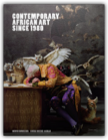
Contemporary African Art Since 1980 is the first major survey of the work of contemporary African artists from diverse situations, locations, and generations who work either in or outside of Africa, but whose practices engage and occupy the social and cultural complexities of the continent since the past 30 years. Its frame of analysis is absorbed with historical transitions: from the end of the postcolonial utopias of the sixties during the 1980s to the geopolitical, economic, technological, and cultural shifts incited by globalization. This book is both narrower in focus in the periods it reflects on, and specific in the ground it covers. It begins by addressing the tumultuous landscape of contemporary Africa, examining landmarks and narratives, exploring divergent systems of representation, and interrogating the ways artists have responded to change and have incorporated new aesthetic principles and artistic concepts, images and imaginaries to deal with such changes. Organized in chronological order, the book covers all major artistic mediums: painting, sculpture, photography, film, video, installation, drawing, collage. It also covers aesthetic forms and genres, from conceptual to formalist, abstract to figurative practices. Moving between discursive and theoretical registers, the principal questions the book analyzes are: what and when is contemporary African art? Who might be included in the framing of such a conceptual identity? It also addresses the question of globalization and contemporary African art.
The book thus provides an occasion to examine through close reading and visual analysis how artistic concerns produce major themes. It periodizes and cross references artistic sensibilities in order to elicit multiple conceptual relationships, as well as breaks with prevailing binaries of center and periphery, vernacular and academic, urban and non-urban forms, indigenous and diasporic models of identification. In order to theorize how these concerns have been formulated in artistic terms and their creative consequences Contemporary African Art Since 1980 examines a range of ideas, concepts and issues that have shaped the work and practice of African artists within an international and global framework. It traces the shifts from earlier modernist strategies of the sixties and seventies after the period of decolonization, and the rise of pan-African nationalism, to the postcolonial representations of critique and satire that evolved from the 1980s, to the postmodernist irony of the 1990s, and to the globalist strategies of the 21st century.
The main claim of this book is that contemporary African art can be best understood by examining the tension between the period of great political changes of the era of decolonization that enabled new and exciting imaginations of the future to be formulated, and the slow, skeptical, and social decline marked by the era of neo-liberalism and Structural Adjustment programs of the 1980s. These issues are addressed in chapters covering the themes of "Politics, Culture, Critique," "Memory and Archive," "Abstraction, Figuration and Subjectivity," and "The Body, Gender and Sexuality." In addition, the book employs sidebars to provide brief and incisive accounts of and commentaries on important contemporary political, economic and cultural events, and on exhibitions, biennales, workshops, artist groups and more. Rather than a comprehensive survey, this richly illustrated book presents examples of ambitious and important work by more than 160 African artists since the last 30 years. This list includes Georges Adeagbo Tayo Adenaike, Ghada Amer, El Anatsui, Kader Attia, Luis Basto, Candice Breitz, Moustapha Dime, Marlene Dumas, Victor Ekpuk, Samuel Fosso, Jak Katarikawe, William Kentridge, Rachid Koraichi, Mona Mazouk, Julie Mehretu, Nandipha Mntambo, Hassan Musa, Donald Odita, Iba Ndiaye, Richard Onyango, Ibrahim El Salahi, Issa Samb, Cheri Samba, Ousmane Sembene, Yinka Shonibare, Barthelemy Toguo, Obiora Udechukwu, and Sue Williamson.
Okwui Enwezor, a leading curator and scholar of contemporary art, is the Dean of Academic Affairs at the San Francisco Art Institute, and founding publisher and editor of Nka: Journal of Contemporary African Art.
Chika Okeke-Agulu is Assistant Professor of Art and Archeology and African American Studies at Princeton University, and editor of Nka: Journal of Contemporary African Art.
Contemporary American Women Artists
Cedco Book Collection Staff
Contemporary Art and the Museum: A Global Perspective
Claude Ardouin, Hans Belting, Andrea Buddensieg, Peter Weibel
All over the world, contemporary art is moving into traditional museums, its institutionalization an ongoing proposition with swiftly evolving practices. And more than ever before, the art of the moment is being made and collected internationally. Global art production is affecting museums everywhere, even those in traditional centers of cultural influence. For international artists, the question is how to get themselves and their work to cultural centers; for their home states and museums, the question is how to assimilate globalized contemporary art and its local stars. While institutions outside the West are often also outside a crucial loop of money and influence, the increasing range of biennials—from Sao Paulo to Senegal's Dak'Art—is redrawing the map. This essay collection explores the impact of contemporary non-western art and the world's local museums. Writers include Peter Weibel of ZKM Karlsruhe and Claude Ardouin of the British Museum.
Contemporary Art in Asia: A Critical Reader
Melissa Chiu, Benjamin Genocchio
In 2008, Asia stormed the citadel of the New Yorkart world when two major museums presented retrospectives of Asian contemporaryartists: Cai Guo-Qiang at the Guggenheim Museum and Takashi Murakami at theBrooklyn Museum. Meanwhile, in Hong Kong, a painting by Zeng Fanzhi sold for $9.5 million, settinga new world auction record for Chinese contemporary art. The Western art worldis still coming to grips with the challenge: it is all about Asia now. This book is the first anthology ofcritical writings to map the shift in both the nature and the reception ofAsian art over the past twenty years. Offering texts by leading figures in thefield (mostly Asian), and including more than fifty illustrations in color andblack and white, it covers developments in East Asia (including China, Korea, andJapan), South Asia (including India and Pakistan), and Southeast Asia (includingVietnam, Indonesia, and Thailand). Together, the twenty-three textsposit ahistorical and pan-Asian response to the question, "What is Asiancontemporary art?" Considering such topics as Asian modernism ("productivemistranslation" of the European original), Asian cubism, and thecurating, collecting, and criticism of Asian contemporary art, this bookpromises to be a foundational reference for many years to come.
Contemporary Art: A Very Short Introduction
Julian Stallabrass
Contemporary art has never been so popular, but what is its role today and who is controlling its future? Contemporary art is supposed to be a realm of freedom where artists shock, break taboos, flout generally received ideas, and switch between confronting viewers with works of great emotional profundity and jaw-dropping triviality. But away from shock tactics in the gallery, there are many unanswered questions. Who is really running the art world? What effect has America's growing political and cultural dominance had on art?
Here Julian Stallabrass takes us inside the international art world to answer these and other controversial questions, and to argue that behind contemporary art's variety and apparent unpredictability lies a grim uniformity. Its mysteries are all too easily explained, its depths much shallower than they seem. Contemporary art seeks to bamboozle its viewers while being the willing slave of business and government. This book is your antidote and will change the way you see contemporary art.
About the Series: Combining authority with wit, accessibility, and style, Very Short Introductions offer an introduction to some of life's most interesting topics. Written by experts for the newcomer, they demonstrate the finest contemporary thinking about the central problems and issues in hundreds of key topics, from philosophy to Freud, quantum theory to Islam.
Conversation Pieces: Community and Communication in Modern Art
H. Kester Grant
Some of the most innovative art of the past decade has been created far outside conventional galleries and museums. In a parking garage in Oakland, California; on a pleasure boat on the Lake of Zurich in Switzerland; at a public market in Chiang Mai, Thailand—artists operating at the intersection of art and cultural activism have been developing new forms of collaboration with diverse audiences and communities. Their projects have addressed such issues as political conflict in Northern Ireland, gang violence on Chicago's West Side, and the problems of sex workers in Switzerland. Provocative, accessible, and engaging, this book, one of the first full-length studies on the topic, situates these socially conscious projects historically, relates them to key issues in contemporary art and art theory, and offers a unique critical framework for understanding them.
Grant Kester discusses a disparate network of artists and collectives—including The Art of Change, Helen and Newton Harrison, Littoral, Suzanne Lacy, Stephen Willats, and WochenKlausur—united by a desire to create new forms of understanding through creative dialogue that crosses boundaries of race, religion, and culture. Kester traces the origins of these works in the conceptual art and feminist performance art of the 1960s and 1970s and draws from the writings of Mikhail Bakhtin, Jürgen Habermas, and others as he explores the ways in which these artists corroborate and challenge many of the key principles of avant-garde art and art theory.
Conversations Before the End of Time
Suzi Gablik
As we head towards the 21st century, as we try to confront and adapt to deepening global ecological and social problems, what meaning can art have, and can it survive as we know it? This book addresses these and other questions, exploring through dialogue, rather than from a position of authority, the role and meaning of art in our culture. A series of 18 conversations with artists, writers, philosophers and critics provides the basis of thoughts and points of view. The answers that emerge all seem to point the same way. They indicate the need for a new direction in art - a move away from the isolationist, individualistic ideals of modernism towards a more "collective" view, an art with wider parameters embracing a revitalized sense of community and an enlarged ecological perspective.
Create Dangerously: The Immigrant Artist at Work
Edwidge Danticat
A New York Times Notable Book
A Miami Herald Best Book of the Year
In this deeply personal book, the celebrated Haitian-American writer Edwidge Danticat reflects on art and exile.
Inspired by Albert Camus and adapted from her own lectures for Princeton University’s Toni Morrison Lecture Series, here Danticat tells stories of artists who create despite (or because of) the horrors that drove them from their homelands. Combining memoir and essay, these moving and eloquent pieces examine what it means to be an artist from a country in crisis.
Croy's Creative Photography
O. R. Croy
Cubism A&I
Neil Cox
This is an introduction to cubism, the movement often seen as the single most important development in the history of 20th-century art. The book offers an account of the origins of the style in the dialogue between Georges Braque and Pablo Picasso between 1907 and 1914. It traces cubism's evolution in the work of these two artists as well as Juan Gris, Fernand Leger, Robert Delaunay, Andre Derain, Albert Gleizes, Jean Metzinger and many others. The book situates cubism in the context of its times, and shows how it penetrated artistic activity far beyond painting and sculpture, reinvigorating architecture, graphic design, music and poetry, and transforming the possibilities of photography and film.
Cubism and Culture
Mark Antliff, Patricia Leighten
"This is a book whose great achievement is to bring out the importance of the Cubists in a history far bigger than the history of art."—Christopher Green, Courtauld Institute of ArtOften considered to be the seminal art movement of the twentieth century, Cubism initiated a pictorial revolution through its radical approach to image making, invention of the new media of collage and sculptural assemblage, and evolution toward pure abstraction. Scholarly yet accessible, Cubism and Culture reveals these profound formal innovations as integrally related to changes in French society. The authors first examine the movement's origins in primitivism and its engagement with issues of race and colonialism, and then consider the Cubists' responses to anti-Enlightenment philosophies, the relation of Cubist art to the "classical," the role played by gender conceptually and within particular careers and practices, collage and its interplay with cultural themes, and the impact of anarchism, nationalism, and pacifism on Cubism's cultural politics. This comprehensive and fresh examination of Cubism in its wider context—social, cultural, political, scientific, and philosophical—covers the full range of art and artists from the movement's advent in 1908.
Among the artists included: Alexander Archipenko, Maria Blanchard, Georges Braque, Robert Delaunay, Sonia Delaunay, André Derain, Marcel Duchamp, Raymond Duchamp-Villon, Albert Gleizes, Juan Gris, Alice Halicka, Roger de La Fresnaye, Marie Laurencin, Henri Laurens, Henri Le Fauconnier, Fernand Léger, Jacques Lipchitz, Louis Marcoussis, Frans Masereel, Jean Metzinger, Francis Picabia, Pablo Picasso. 182 illustrations, 54 in color
Cubism and Twentieth-Century Art
Robert Rosenblum
This reissue brings back into print a timeless classic on one of the most important movements in Modern art. Art historian Robert Rosenblum brilliantly clarifies the language of Cubism and offers a penetrating analysis of its role in the creation of the major pictorial and sculptural styles of our time. The colorplates include both well-known Cubist masterpieces and works marking the transition to other viewpoints in contemporary art.
Culture Class: Art, Creativity, Urbanism
Martha Rosler
Culture Game
Olu Oguibe
In self-congratulatory tones of tolerance and open-mindedness, the Western gatekeepers of the contemporary art world-gallery owners and museum curators, patrons and promoters-take great pains to demonstrate their inclusive vision of world culture. They highlight the Latin American show mounted "a few years ago" or the African works featured in a recent exhibition of non-Western artists. Non-Western artists soon discover that this veneer of liberalism masks an array of unwritten, unspoken, and unseemly codes and quotas dictating the acquisition and exhibition of their works and the success of their careers. In past decades, cultural institutions and the critical establishment in the West resisted difference; today, they are obsessed with exoticism. Both attitudes reflect firmly entrenched prejudices that prescribe the rules of what Nigerian-born artist, curator, and scholar Olu Oguibe terms the "culture game."
In the celebrated, controversial essays gathered here, Oguibe exposes the disparities and inconsistencies of the reception and treatment afforded Western and non-Western artists; the obstacles that these contradictions create for non-Western and minority artists, especially those who live and practice in the Western metropolis; and the nature and peculiar concerns of contemporary non-Western art as it deals with the ramifications and residues of the colonial encounter as well as its own historical and cultural past. Ranging from the impact of the West's appetite for difference on global cultural relations and the existence of a digital Third World to the African redefinition of modernity, Oguibe's uncompromising and unapologetic criticism provides a uniquely global vision of contemporary art and culture.
Olu Oguibe is a visual artist, writer, scholar, and curator. He is associate professor of art and art history at the University of Connecticut.
Dare to Count Phonemes and Graphemes
Haegue Yang
Decolonizing Nature: Contemporary Art and the Politics of Ecology
T. J. Demos
While ecology has received little systematic attention within art history, its visibility and significance has grown in relation to the threats of climate change and environmental destruction. By engaging artists widespread aesthetic and political engagement with environmental conditions and processes around the globe and looking at cutting-edge theoretical, political, and cultural developments in the Global South and North Decolonizing Nature offers a significant, original contribution to the intersecting fields of art history, ecology, visual culture, geography, and environmental politics. Art historian T. J. Demos, author of Return to the Postcolony: Specters of Colonialism in Contemporary Art (2013), considers the creative proposals of artists and activists for ways of life that bring together ecological sustainability, climate justice, and radical democracy, at a time when such creative proposals are urgently needed.
Defining Contemporary Art: 25 Years in 200 Pivotal Artworks
Daniel Birnbaum, Cornelia H. Butler, Suzanne Cotter
In the mid-1980s the sprouting of new movements that had driven modern art since the nineteenth century finally went dormant, sputtering out with a last few half-hearted lels ('pattern painting', 'neo-geo', 'commodity art'). But this was not the end of art history — far from it. In the years since, art's creative development has remained more vibrant than ever, resulting in a staggering diversity of new forms.
Defining Contemporary Art responds to this unique landscape with an innovative approach to art history. Assembled and written by eight of the most prominent curators working today, all of whom have both witnessed and shaped this period, Defining Contemporary Art tells the story of the two hundred pivotal artworks of the past twenty-five years. These artworks include not only the most talked out pieces but also the quietly influential works, those which may have been overlooked at the time of their making but which went on to change the paradigm of their era. Arranged year by year, these two hundred works provide a true chronological depiction of creativity in our era, forming a mosaic in which readers may find their own patterns..
Differencing the Canon: Feminism and the Writing of Art's Histories
Griselda Pollock
In this major book, Griselda Pollock engages boldly in the culture wars over `what is the canon?` and `what difference can feminism make?` Do we simply reject the all-male line-up and satisfy our need for ideal egos with an all women litany of artistic heroines? Or is the question a chance to resist the phallocentric binary and allow the ambiguities and complexities of desire - subjectivity and sexuality - to shape the readings of art that constantly displace the present gender demarcations?
A Documentary History of Art, Vol. 1: The Middle Ages and the Renaissance
Elizabeth Gilmore Holt
In this unique collection of notebooks, letters, treatises, and contracts dealing with the art of the Middle Ages and Renaissance, the reader is given an extraordinary insight into the personalities and conditions of the times.
Early Medieval Art
Ernst Kitzinger
An Economy of Signs: Contemporary Indian Photographs
Sunil Gupta
Education
Felicity Allen
This book will be an original and indispensable resource for all who believe in the importance of art in the wider educational realm. Framing the recent "educational turn" in the arts within a broad historical and social context, this anthology raises fundamental questions about how and what should be taught in an era of distributive rather than media-based practices. Among the many sources and arguments traced here is second-wave feminism, which questioned dominant notions of personal and institutional freedom as enacted through art teaching and practice. Similarly, education-based responses by the art community to the catastrophes of World War II and postcolonial conflict critically inform contemporary art confronting the interrelationships of education, power, market capitalism, and—as Michael Hardt and Antonio Negri describe it—the global condition of war. These writings by artists, philosophers, educators, poets, and activists center on three recurring and interrelated themes: the notion of "indiscipline" in theories and practices that challenge boundaries of all kinds; the present and future role of the art school; and the turn to pedagogy as medium in a diverse range of recent projects. Other writings address such issues as instrumentalism and control, liberation and equality, the production and the politics of culture, and the roots of research-based practice and experimental participatory works.
Encyclopedia of Photography
The Focal
Everything Passes
Arnaldo Morales
The Calle Junín is one of the best-known thoroughfares in Medellín, Colombia. From the 1950s through the end of the 1970s, street photographers known as fotocineros would photograph passersby on the Calle Junín and offer their images for sale. Everything Passes lovingly compiles these nostalgia-laden documents, which—as the title implies—convey not only the everyday life of bygone eras (along with the clothing, cars, buildings, advertisements, shops and display windows of the time), but also conjure the powerful sense of ephemerality and mortality that inheres in the casualness of both the images and the act of walking. Some 400 anonymous photographs were collected to make this volume, over a four-year period. Charmingly designed with a stamped cloth cover featuring a pedestrian in silhouette, the publication includes a meditation on the history of the Calle Junín that accompanies the photographs throughout.
The Fabric of Cultures: Fashion, Identity, and Globalization
Eugenia Paulicelli, Hazel Clark
Fashion is both public and private, material and symbolic, always caught within the lived experience and providing an incredible tool to study culture and history.
The Fabric of Cultures examines the impact of fashion as a manufacturing industry and as a culture industry that shapes the identities of nations and cities in a cross-cultural perspective, within a global framework. The collected essays investigate local and global economies, cultures and identities and the book offers for the first time, a wide spectrum of case studies which focus on a diversity of geographical spaces and places, from global capitals of fashion such as New York, to countries less known or identifiable for fashion such as contemporary Greece and soviet Russia.
Highly illustrated and including essays from all over the world, The Fabric of Cultures provides a comprehensive survey of the latest interdisciplinary scholarship on fashion, identity and globalisation.
Facing the Page: British Artists' Books: A Survey
Cathy Courtney
Failure
Lisa Le Feuvre
Amid the global uncertainties of our times, failure has become a central subject of investigation in recent art. Celebrating failed promises and myths of the avant-garde, or setting out to realize seemingly impossible tasks, artists have actively claimed the space of failure to propose a resistant view of the world. Here success is deemed overrated, doubt embraced, experimentation encouraged, and risk considered a viable strategy. The abstract possibilities opened up by failure are further reinforced by the problems of physically realizing artworks—wrestling with ideas, representation, and object-making. By amplifying both theoretical and practical failure, artists have sought new, unexpected ways of opening up endgame situations, ranging from the ideological shadow of the white cube to unfulfilled promises of political emancipation. Between the two subjective poles of success and failure lies a space of potentially productive operations where paradox rules and dogma is refused. This collection of writings, statements, mediations, fictions, polemics, and discussions identifies failure as a core concern in cultural production. Failure identifies moments of thought that have eschewed consensus, choosing to address questions rather than answers.Artists surveyed include Bas Jan Ader, Francis Alÿs, John Baldessari, Chris Burden, Phil Collins, Martin Creed, David Critchley, Fischli & Weiss, Ceal Floyer, Isa Genzken, Dominique Gonzalez-Foerster, Félix González-Torres, Wade Guyton, International Necronautical Society, Ray Johnson, Mike Kelley, Martin Kippenberger, Michael Krebber, Bruce Nauman, Simon Patterson, Janette Parris, Yvonne Rainer, Robert Rauschenberg, Dieter Roth, Allen Ruppersberg, Roman Signer, Annika Ström, Paul Thek, William WegmanWriters include Giorgio Agamben, Samuel Beckett, Daniel Birnbaum, Bazon Brock, Johanna Burton, Emma Cocker, Gilles Deleuze, Russell Ferguson, Ann Goldstein, Jörg Heiser, Jennifer Higgie, Richard Hylton, Jean-Yves Jouannais, Lisa Lee, Stuart Morgan, Hans-Joachim Müller, Karl Popper, Edgar Schmitz, Coosje van Bruggen
Flash Afrique! Photography from West Africa
Gerald Matt, Thomas Miessgang, Olu Oguibe, Koyo Kouoh, Simon Njami
Terra incognito? Heart of darkness? How about "stylish continent," as one magazine once wrote? The gigantic landmass that is Africa, over which a colonial shadow still looms, is a territory of projections and misunderstandings. The West African photographers presented in Flash Afrique!, including Philip Kwame Apagya, Dorris Haron Kasco, Seydou Keita, Boubacar Touré Mandémory, Bouna Medoune Seye and Malick Sidibé, tell stories about the tension between dreams and reality. Elaborately arranged studio portraits reveal how Africa sees itself. Documentary images comment on the sheer craziness of overpopulated cities, and conversations with the photographers open up an art scene only recently begun to emerge from the shadows.
Fotografia - Ousadia em imagens
Graca Seligman e Beatriz Vilela
The Future of the Image
Jacques Rancière
A leading philosopher presents a radical manifesto for the future of art and film.
Lauded by major contemporary artists and philosophers, Jacques Rancière's work returns politics to its central place in understanding art.
In The Future of the Image, Jacques Rancière develops a fascinating new concept of the image in contemporary art, showing how art and politics have always been intrinsically intertwined. Covering a range of art movements, filmmakers such as Godard and Bresson, and thinkers such as Foucault, Deleuze, Adorno, Barthes, Lyotard and Greenberg, Rancière shows that contemporary theorists of the image are suffering from religious tendencies.
He argues that there is a stark political choice in art: it can either reinforce a radical democracy, or create a new reactionary mysticism. For Rancière there is never a pure art: the aesthetic revolution must always embrace egalitarian ideals.
Georgian Architecture
James Curl
Examining the period's remarkable stylistic diversity, this is an illustrated guide to the architecture of the reigns of the first four Georges (1714-1830). To many people the term "Georgian" suggests a dignified, often symmetrical facade of brick, with elegant sash-windows, a doorcase (usually with a fanlight) and a well-mannered and reticent appearance. However, there was far more to the Georgian period than that, and the book sets out to show the great diversity of architecture created during the era, from the grander classicism influenced by the architecture of Italy, notably that of Palladio, to the exotic tastes for chinoiserie, rococo, Gothic and even Indian styles. The author discusses all these aspects and also sets the scene in respect of notions concerned with the beautiful, the picturesque and the sublime, drawing attention especially to the importance of the picturesque.
Gerry Bibby: The Drumhead
Gerry Bibby, Natasha Soobramanien
Over the past 50 years artist Gerry Bibby has inserted narratives and instructional
texts into his artworks as acts of tactical withdrawal. The Drumhead, Bibby s first
publication, includes a series of his Language Costumes or fragmentary texts
which, like William Burroughs s The Wild Boys or Robert Walser s The Walk,
attest to an offended intelligence. Moving across performance, sculpture and
writing, Gerry Bibby s artworks take form at the uncomfortable fissures between
the three. His Language Costumes arrive at these junctions as self-styled
instructional texts, photocopy machine manuals, drinks menus and poetic passages.
His captivating passages brim with wit, wry observation and occasionally with
disgust, offering viewers ways out even if only at the time of reading.
Commissioned by If I Can t Dance, I Don t Want to Be Part of Your Revolution,
The Drumhead follows a two-year collaboration with KUB Arena of the Kunsthaus
Bregenz, The Showroom London, CCA Glasgow, and the Institute of Modern
Art, Brisbane.
Global Art
Irene Gludowacz, Silvia von Bennigsen, Susanne van Hagen
Through nearly 40 interviews with art world luminaries from North and South America, Europe and Asia—including John Baldessari, Eli Broad, Maurizio Cattelan, Lisa Dennison, Ingvild Goetz, Dakis Joannou, Anish Kapoor, Thomas Krens, Oleg Kulik, Ernesto Neto, Simon de Pury, Neo Rauch, Kiki Smith, Robert Storr and Ai Wei Wei—this topical volume focuses on the relationship between art and globalization. With ever-increasing ease of communication, art has been more and more able to connect cultures and create networks. Borders have become fluid, not only between genres, but also between nations. In this candid collection, editors Irene Gludowacz, Silvia von Bennigsen and Susanne van Hagen present interviews with a selection of the world's most notable artists, collectors and gallerists, providing insight into both the opportunities and dangers of today's artworld politics.
The Global Contemporary and the Rise of New Art Worlds
Hans Belting, Andrea Buddensieg, Peter Weibel
The geography of the visual arts changed with the end of the Cold War. Contemporary art was no longer defined, exhibited, interpreted, and acquired according to a blueprint drawn up in New York, London, Paris, or Berlin. The art world distributed itself into art worlds. With the emergence of new art scenes in Asia and the Middle East and the explosion of biennials, the visual arts have become globalized as surely as the world economy has. This book offers a new map of contemporary art's new worlds. The Global Contemporary and the Rise of New Art Worlds documents the globalization of the visual arts and the rise of the contemporary over the last twenty years. Lavishly illustrated, with color throughout, it tracks developments ranging from exhibition histories and the rise of new art spaces to art's branding in such emerging markets as Hong Kong and the Gulf States. Essays treat such subjects as curating after the global turn; art and the migration of pictures; the end of the canon; and new strategies of representation.
Global Studies: Mapping Contemporary Art and Culture
Hans Belting, Jacob Birken, Peter Weibel, Andrea Buddensieg
This is the third volume in Hans Belting and Peter Weibel's Global Art and the Museum series, which analyzes how globalization affects the industry of contemporary art. Alongside case studies of individual artists, Global Studies outlines the histories of various regional art practices, exhibitions and ideologies. Among the topics covered are Indonesia's art market bubble; Austrian documentary filmmakers Intersections series; Zimbabwean stone sculpture of the past decade; Alighiero Boetti's Afghan embroideries; the influence of Chinese aesthetics on the opening ceremony at the 2008 Beijing Olympic Games. Among the contributing scholars are Chrischona Schmidt, Irina Vogelsang, Carol Yinghua Lu, Adele Tan, Anthony Gardner, Julia T.S. Binter, Isabel Seliger, Birgit Hopfener, Ding Ning, Patrick D. Flores, Monica Juneja, Cathrine Bublatzsky, Elizabeth Harney, Agung Hujatnika, Anne Linden and Rania Gaafar.
The Gold Museum
Meseum Staff
Language is English and Spanish Illustrated
The Gothic Cathedral
Christopher Wilson
"The Gothic Cathedral" focuses on the interaction between design and the requirements of patrons, following the creative processes of architects by reconstructing the problems and opportunities which faced them. Christopher Wilson presents the essential facts on such aspects of chonology, structural techniques and stylistic developments; and then goes further, seeing the story as a sequence of choices from which new solutions - and still greater challenges - arose.
Graphic Design, Referenced
Rockport Publishers
195006 Features: -Graphic Design, Referenced.-Category: Design/General.-Format: Paperback.-Number of pages: 400. Dimensions: -Overall dimensions: 8.5" H x 10" W.
Great Speeches of the 20th Century
Ian Jack
Guernica: The making of a painting
Joaquin de la Puente
Haegue Yang: Dare to Count Phonemes and Graphemes
Haegue Yang
This catalogue accompanies two parallel solo exhibitions by Haegue Yang held in the fall of 2013: Journal of Bouba/kiki at Glasgow Sculpture Studios (October 5 December 20, 2013); and Journal of Echomimetic Motions at Bergen Kunsthall (October 18 December 22, 2013). This new collaborative publication, Dare to Count Phonemes and Graphemes, has evolved within the framework of these geographically separate yet collaboratively conceived exhibitions. While each exhibition was an independent manifestation, they both are intrinsically linked to Yang s continuous artistic evolution. The developments shown are emblematic of the artist s recent projects, focusing on the ideas of abstraction and motion. This catalogue presents two newly commissioned texts, as well as an interview between Yang and the respective curators of the exhibitions, which explore the artist s distinctive and diverse work.
Haegue Yang s works are internationally appreciated and are well known for an eloquent and seductive language of visual abstraction that she often combines with direct sensory experience. She is an artist who continuously pushes the boundaries of her practice, engaging with new methodologies and ways of making. This approach is evident from her exhibitions at Glasgow Sculpture Studios and Bergen Kunsthall as well as this new publication.
Hans Hofmann
Karen Wilkin
The painter Hans Hofmann (1880-1966) is one of the most important figures in post-war American art. In his lifetime, he came to be admired for his exuberant, colour-filled canvases, but it was as an influential teacher, first in his native Germany, later in New York and Provincetown, that he was most renowned. Today, he is celebrated a giant of twentieth-century abstraction, and his pivotal role, along with Jackson Pollock, Willem de Kooning, and Arshile Gorky, in the development of Abstract Expressionism is widely acknowledged. Published to accompany a retrospective of the artist's work at the Naples Museum of Art, Florida, Hans Hofmann examines the full range of his achievement and influence as both artist and theorist. As a painter, Hofmann was distinguished by his ability to create expressive drama and evocative space with contrasts of intense color, richly modulated surfaces, and a vocabulary of shapes ranging from the geometric to the calligraphic. As a teacher, he brought to America first-hand knowledge of the work of such European modernists as Pablo Picasso and Henri Matisse, who he met as a young man studying in Paris, during the early years of twentieth-century modernism. As a theorist, he developed an original philosophy of what a work of art could be, which formed the basis of his teaching, lectures, and essays. One of these statements, about the role of colour in painting, is included in Hans Hofmann. More than sixty paintings highlight key stages of Hofmann's career, with a generous representation of works from the late flowering of his last decades, when he produced many of his most inventive pictures.
Has Modernism Failed?
Suzi Gablik
An art critic confronts the current art milieu, characterizing it as being without purpose or moral authority, and questions whether allegedly radical artists now reflect the culture of consumerism more than they challenge it.
Hindu Art
T. Richard Blurton
In a survey that stretches back to prehistory, Blurton discusses the religious, cultural, and historical influences that figure in Hindu art. Tracing its evolution, he shows how Hindu art has come to embrace widely varying styles, reflecting differences between regions from Nepal to Afghanistan, from Sri Lanka to Bangladesh.
History of Art
ANTHONY F. JANSON' 'H.W. JANSON
History of Italian Renaissance art: Painting, sculpture, architecture
Frederick Hartt
Frederick Hartt's unrivaled classic is a dazzling journey through four centuries of Italian Renaissance painting, sculpture, and architecture. Its sumptuous color illustrations, fine writing, and in-depth scholarship bring into focus all the elements of this extraordinarily creative period and the remarkable personalities who gave it life. Highlights of this Fifth Edition include: • a striking new design with more than half the artworks illustrated in full color • new views of frescoes and sculptures photographed in their original locations that offer a dynamic insight into the way the art was originally experienced • fresh views of great works of art that have been restored since the last edition • extended captions that identify Renaissance patrons and provide details about historical context, emphasizing how the art was created and why
Building on the book's more than 30-year tradition, revising author David G. Wilkins skillfully blends new scholarly discoveries with the enthusiasm that Hartt so successfully conveyed to generations of students and admirers of Italian Renaissance art.
History of modern art: Painting, sculpture, architecture
H. Harvard Arnason
A History of Private Life, Volume I: From Pagan Rome to Byzantium
Paul Veyne
First of the widely celebrated and sumptuously illustrated series, this book reveals in intimate detail what life was really like in the ancient world. Behind the vast panorama of the pagan Roman empire, the reader discovers the intimate daily lives of citizens and slaves—from concepts of manhood and sexuality to marriage and the family, the roles of women, chastity and contraception, techniques of childbirth, homosexuality, religion, the meaning of virtue, and the separation of private and public spaces.
The emergence of Christianity in the West and the triumph of Christian morality with its emphasis on abstinence, celibacy, and austerity is startlingly contrasted with the profane and undisciplined private life of the Byzantine Empire. Using illuminating motifs, the authors weave a rich, colorful fabric ornamented with the results of new research and the broad interpretations that only masters of the subject can provide.
How to See a Work of Art in Total Darkness
Darby English
Work by black artists today is almost uniformly understood in terms of its "blackness," with audiences often expecting or requiring it to "represent" the race. In How to See a Work of Art in Total Darkness, Darby English shows how severely such expectations limit the scope of our knowledge about this work and how different it looks when approached on its own terms. Refusing to grant racial blackness—his metaphorical "total darkness"—primacy over his subjects' other concerns and contexts, he brings to light problems and possibilities that arise when questions of artistic priority and freedom come into contact, or even conflict, with those of cultural obligation. English examines the integrative and interdisciplinary strategies of five contemporary artists—Kara Walker, Fred Wilson, Isaac Julien, Glenn Ligon, and William Pope.L—stressing the ways in which this work at once reflects and alters our view of its informing context: the advent of postmodernity in late twentieth-century American art and culture.The necessity for "black art" comes both from antiblack racism and resistances to it, from both segregation and efforts to imagine an autonomous domain of black culture. Yet to judge by the work of many contemporary practitioners, English writes, black art is increasingly less able—and black artists less willing—to maintain its standing as a realm apart. Through close examinations of Walker's controversial silhouettes' insubordinate reply to pictorial tradition, Wilson's and Julien's distinct approaches to institutional critique, Ligon's text paintings' struggle with modernisms, and Pope.L's vexing performance interventions, English grounds his contention that to understand this work is to displace race from its central location in our interpretation and to grant right of way to the work's historical, cultural, and aesthetic specificity.
I Dream a World: Portraits of Black Women Who Changed America
Barbara Summers
A celebration in photographs and interviews of African-American women who have in some way changed or contributed to the American nation. They include writers, poets, lawyers, singers, activists, sportswomen and journalists. Each woman speaks of her life and her work, and of her hopes for the future. Brian Lanker won the 1974 Pulitzer Prize for feature photography. He has worked for various newspapers and frequently has photo essays published in "Life".
The Identity in Question
John Rajchman
The words 'identity', 'diversity', 'multiculturalism', and 'Eurocentrism' have become familiar to us through a process of political and cultural transformation. In the United States, a great national debate rages over fears that the country will fall apart and sacrifice its free speech to 'political correctness'. In Europe, a related discussion has focused on the resurgence of xenophobia and ethnic nationalism. Undoubtedly, these debates touch on issues which, after the collapse of Cold War geopolitics, are likely to remain with us for some time. The Identity in Question provides a theoretical analysis of this issue and the questions it raises about critical theory. The contributors to this collection look behind the familiar words of the discourse to rethink notions of universality and agency and the traditions of liberalism, nationalism and pluralism. They investigate the meanings of democracy and 'radical democracy'. They also ask how such notions relate to questions of sexual orientation.
Illuminations of Hildegard of Bingen
Matthew Fox
An introduction to the life and work of Hildegard.
• Reveals the life and teachings of one of the greatest female artists and intellectuals of the Western Mystical Tradition.
• Contains 24 full-color illustrations by Hildegard of Bingen.
• Includes commentary by Matthew Fox, author of Original Blessing (250,000 sold).
Hildegard of Bingen (1098-1179) was an extraordinary woman living in the Rhineland valley during most of the twelfth century. Besides being the abbess of a large and influential Benedictine abbey, she was a prominent preacher, healer, scientist, and artist. She also was a composer and theologian, writing nine books on theology, medicine, science, and physiology, as well as 70 poems and an opera. At the age of 42, she began to have visions; these were captured as 36 illuminations—24 of which are recorded in this book along with her commentaries on them. She also wrote a text describing these visions entitled Scivias (Know the Ways), now published as Hildegard of Bingen's Mystical Visions.
Author Matthew Fox has stated, "If Hildegard had been a man, she would be well known as one of the greatest artists and intellectuals the world has ever seen." It is a credit to the power of the women's movement and our times that this towering genius of Western thought is being rediscovered in her full grandeur and autonomy.
Virtually unknown for more than 800 years in Western history, Hildegard was featured as one of the women in Judy Chicago's Dinner Party in the early 1980s and published for the first time in English by Bear & Company in 1982. In addition to her mystical teachings, Hildegard's music has been performed and recorded for a new and growing audience.
Impressionism: Art and Modern Life
Andrea MacKean
Impressionism: Art, Leisure, and Parisian Society
Professor Robert L. Herbert et al.
Sumptuously illustrated with many of the most beautiful Impressionist images, this book presents provocative new interpretations of a wide range of famous masterpieces, showing how they were fully integrated into the social and cultural life of the times.
Impressionists and Politics: Art and Democracy in the Nineteenth Century
Philip Nord
Impressionists and Politics is an accessible introduction to the current debates about Impressionism. Was the artistic movement really radical and innovative? Is the term "Impressionism" itself an adequate characterization of the movement of painters and critics that took the mid-nineteenth century Paris art world by storm?
By providing an historical background and context, the book places the Impressionists' roots in wider social and economic transformations and explains its militancy, both aesthetic and political.
Impressionists and Politics is a concise history of the movement, from its youthful inception in the 1860s, through to its final years of recognition and then crisis.
In Senghor's Shadow: Art, Politics, and the Avant-Garde in Senegal, 1960–1995
Elizabeth Harney
In Senghor’s Shadow is a unique study of modern art in postindependence Senegal. Elizabeth Harney examines the art that flourished during the administration of Léopold Sédar Senghor, Senegal’s first president, and in the decades since he stepped down in 1980. As a major philosopher and poet of Negritude, Senghor envisioned an active and revolutionary role for modern artists, and he created a well-funded system for nurturing their work. In questioning the canon of art produced under his aegis—known as the Ecole de Dakar—Harney reconsiders Senghor’s Negritude philosophy, his desire to express Senegal’s postcolonial national identity through art, and the system of art schools and exhibits he developed. She expands scholarship on global modernisms by highlighting the distinctive cultural history that shaped Senegalese modernism and the complex and often contradictory choices made by its early artists.
Heavily illustrated with nearly one hundred images, including some in color, In Senghor’s Shadow surveys the work of a range of Senegalese artists, including painters, muralists, sculptors, and performance-based groups—from those who worked at the height of Senghor’s patronage system to those who graduated from art school in the early 1990s. Harney reveals how, in the 1970s, avant-gardists contested Negritude beliefs by breaking out of established artistic forms. During the 1980s and 1990s, artists such as Moustapha Dimé, Germaine Anta Gaye, and Kan-Si engaged with avant-garde methods and local artistic forms to challenge both Senghor’s legacy and the broader art world’s understandings of cultural syncretism. Ultimately, Harney’s work illuminates the production and reception of modern Senegalese art within the global arena.
India: Art Now
Christian Gether, Stine Høholt, Ranjit Hoskote
Contemporary art in India has enjoyed a tremendous flourishing since the early 1990s, thanks in part to the country's economic growth and the increased availability of media technology. As Indian artists establish an ever-stronger presence on the global art scene, India: Art Now shows how their negotiations of the global and the local are yielding fascinating fruit. Included here are works by Rina Banerjee, Hemali Bhuta, Atul Dodiya, Sheela Gowda, Shilpa Gupta, Subodh Gupta, Jitish Kallat, Reena Kallat, Rashmi Kaleka, Bharti Kher, Ravinder Reddy, Vivan Sundaram and Thukral and Tagra, among others—artists who have found ways to express the aspirations and conflicts of a new generation, through media varying from painting, sculpture and photography to installation and interactive art. Leading Indian critics, scholars, writers and artists discuss new developments and artistic positions in Indian contemporary art, and its role on the global art scene.
Informal Architecture: Space and Contemporary Culture
Anthony Kiendl
Informal Architectures: Space and Contemporary Culture is a compilation of new and classic writing and visual art on spacial culture in modernity post 9/11. Contributors include established figures in the fields of cultural studies, art theory, urbanism and design. Informal Architectures creates an alternative perspective on the built environment through contemporary culture by focusing on the works and writing of international artists such as Dan Graham, Marjetica Potrc, and Gordon Matta-Clark. Particular attention is paid to spaces that are in some way temporary, contingent, marginal, or fictional in order to critically analyse the meaning of art, and to provide a tenable counter-narrative to architecture's dominant ideologies concerning the monumental and technological imperatives. Diverse perspectives are mobilised in order to question paradigms of modernity and postmodernity, such as progress, irony and rationalism.
Informal Architectures: Space and Contemporary Culture examines theories or and relations to space from descriptive, analytic and creative perspectives in a number of disciplines. It puts forward alternative strategies and criteria for the creation, representation and interpretation of space and its cultural implications. Informal Architectures features essays, artworks and images, with a particular interest in decay, monument, ruin, weakness, permanence, waste and consumption.
The Inner Eye
Marina Warner
Inside the Painter's Studio
Joe Fig
"Inspiration is for amateurs. The rest of us just show up and get to work."
Chuck Close
Inside an art gallery, it is easy to forget that the paintings there are the end products of a process involving not only creative inspiration, but also plenty of physical and logistical details. It is these "cruder," more mundane aspects of a painter's daily routine that motivated Brooklyn artist Joe Fig to embark almost ten years ago on a highly unorthodox, multilayered exploration of the working life of the professional artist. Determined to ground his research in the physical world, Fig began constructing a series of diorama-like miniature reproductions of the studios of modern art's most legendary painters, such as Jackson Pollock and Willem de Kooning. A desire for firsthand references led Fig to approach contemporary artists for access to their studios. Armed with a camera and a self-made "Artist's Questionnaire," Fig began a journey through the workspaces of some of today's most exciting contemporary artists.
Inside the Painter's Studio collects twenty-four remarkable artist interviews, as well as exclusive visual documentation of their studios. Featured artists were asked a wide range of questions about their day-to-day creative life, covering everything from how they organize their studios to what painting tools they prefer. Artists open up about how they set a creative mood, how they choose titles, and even whether they sit or stand to contemplate their work. Also included are a selection of Fig's meticulously detailed miniatures. In this context Fig's diminutive sculpturesreproducing minutiae of the studio, from paint-tube labels and paint splatters on the floor to the surface texture of canvasesbecome part of a fascinating new form of portraiture as diorama. Inside the Painter's Studio offers a rare look into the self-made universe of the artist's studio. Inside the Painter's Studio features interviews with Gregory Amenoff, Ross Bleckner, Chuck Close, Will Cotton, Inka Essenhigh, Eric Fischl, Barnaby Furnas, April Gornik, Jane Hammond, Mary Heilmann, Bill Jensen, Ryan McGinness, Julie Mehretu, Malcolm Morley, Steve Mumford, Philip Pearlstein, Matthew Ritchie, Alexis Rockman, Dana Schutz, James Siena, Amy Sillman, Joan Snyder, Billy Sullivan, and Fred Tomaselli.
Inspiring Learning in Galleries
Barbara Taylor
Inspiring Learning in Galleries 02
Barbara Taylor
Interaction of Color: Revised Edition
Josef Albers
The masterworks of one of the most influential teacher-artists of the twentieth century, originally published as a limited, boxed edition in 1963, was conceived as a guide and teaching aid for artists, instructors, and students. A paperbound edition, containing the unabridged text of the original edition, plus ten representative color plates, chosen from the original silk-screen reproductions and printed by offset lithography, was published in 1971. Since those color plates have now been worn out in repeated reprintings, Mr. Albers has selected ten different color studies, with new comments, for this revised edition.
"The text of Interaction of Color provides the careful reader with the content of Josef Albers’ famous color course. His teaching is based on learning by direct perception, and not by theories or color systems. There are many books on color on the market, but no one combines eyesight with such profound insight as Josef Albers does in Interaction of Color."—Hannes Beckmann
"The publication of this famous book in paperback is an event. . . . It is clearly written and easy to understand. . . . This book ought to be owned by any serious student or teacher, regardless of the kind of painting he does."—The Artist
Introducing Walter Benjamin
Howard Caygill
Follows the life and work of Walter Benjamin, tracing his influence on modern aesthetics and cultural history, as well as his particular focus on the tension between Marxism and Zionism, and between word and image in modern art.
Japanese Ceramics Today. Masterworks from the Kikuchi Collection. February 11 - April 3, 1983. Smithsonian Institution, Washington D.C.; May 18 - July 17, 1983 Victoria and Albert Museum, London.
John Brookes' Garden Design Book Hb
John Brookes
A comprehensive guide to creating a stylish garden. Takes a look at how the garden has developed through the ages and the influence reflected by social and fashion changes. This book also looks at the principles of garden design including drawing plans, and understanding scale and proportion. Advice is provided on how to focus on the visual potential of plants, and how to approach the subject of planting with a designer's eye. John Brookes is the author of "The Garden Book", "The Indoor Garden Book", "The Country Garden" and "The New Small Garden".
The Key to Painting
Worldwide Media Service
Landscape Photography
Gene Thornton
A portfolio of nine landscape photographers in which they present a selection of their work and discuss their style and working methods.
Landscapes of Memory and Experience
Jan Birksted
It has been argued that the history of landscape and of gardens has been marginalized from the mainstream of art history and visual studies because of a lack of engagement with the theories, methods and concepts of these disciplines. This book explores possible ways out of this impasse in such a way that landscape studies would become pivotal through its theoretical advances, since landscape studies would challenge the underlying assumptions of traditional phenomenological theory. Thus the history and theory of twentieth-century landscape might not only once again share concepts and methods with contemporary art and design history, but might in turn influence them.
A complementary sequel to Relating Architecture to Landscape, this volume of essays explores further areas of interest and discussion in the landscape/architecture debate and offers contributions from a team of well-known researchers, teachers and writers. The choice of topics is wide-ranging and features case studies of modern and contemporary schemes from the USA, Far East and Australasia.
Lighting for Photography
W. Nurnberg
Looking In: The Art of Viewing
Mieke Bal, Norman Bryson
Mieke Bal is one of Europe's leading theorists and critics. Her work within feminist art history and cultural studies provides a fascinating alternative to prevailing thinking in these fields. The essays in this collection include Bal's brilliant analyses of the:
Myth of Rembrandt
Imagery of Vermeer
Baroque of Caravaggio
Neo-Baroque of David Reed
Culture of the museum
Visual representation of rape
Closet in Proust
Bal brings a keen visual sense to these studies, as well as an understanding of how literature represents visuality and how the ethics and aesthetics present within museums affect the cultural artifacts displayed.
In his engaging commentary, eminent art historian Norman Bryson shows how Bal's original approach to the interdisciplinary study of art and visual culture has had wide- reaching influence.
The Lure of the Local: Senses of Place in a Multicentered Society
Lucy R. Lippard
The classic exploration of our multiple senses of place, by one of America's most influential art writers.
In The Lure of the Local Lucy R. Lippard weaves together cultural studies, history, geography, and contemporary art to provide a fascinating examination of our multiple senses of place.
Divided into five parts—Around Here; Manipulating Memory; Down to Earth: Land Use; The Last Frontiers: Cities and Suburbs; and Looking Around—the book extends far beyond the confines of the art worlds, including issues of community, land use, perceptions of nature, how we produce the landscape, and how the landscape affects our lives. Praised by critics and readers alike, she consistently makes unexpected connections between contemporary art and its political, social, and cultural contexts.
Mapping It Out: An Alternative Atlas of Contemporary Cartographies
Hans Ulrich Obrist, Tom McCarthy
Mapping the Subject: Geographies of Cultural Transformation
Steve Pile, Nigel Thrift
Rejecting static and reductionist understandings of subjectivity, this book asks how people find their place in the world. Mapping the Subject is an inter-disciplinary exploration of subjectivity, which focuses on the importance of space in the constitution of acting, thinking, feeling individuals.
The authors develop their arguments through detailed case studies and clear theoretical expositions. Themes discussed are organised into four parts: constructing the subject, sexuality and subjectivity, the limits of identity, and the politics of the subject.
There is, here, a commitment to mapping the subject - a subject which is in some ways fluid, in other ways fixed; which is located in constantly unfolding power, knowledge and social relationships. This book is, moreover, about new maps for the subject.
Mapping the Terrain: New Genre Public Art
Suzanne Lacy
In this anthology of twelve essays, editor Suzanne Lacy and eleven eminent artists, curators, and critics forge a critical framework for understanding and interpreting the new public art that has emerged over the last two decades. Mapping the Terrain departs from traditional definitions of public art and explores how the new public art reaches diverse audiences to address issues of race, gender, homelessness, ecology, and urbanization. Also included in this publication is a useful illustrated compendium that chronicles the work of over ninety pioneering new genre public artists. Mapping the Terrain makes an invaluable contribution to the continuing debate about public art and how it can be meaningfully woven into our social fabric. TOC: Preface Acknowledgments Introduction Chapter 1 - An Unfashionable Audience, by Mary Jane Jacob Chapter 2 - Public Constructions, by Patricia C. Phillips Chapter 3 - Connective Aesthetics: Art After Individualism, by Suzi Gablik Chapter 4 - To Search for the Good and Make It Matter, by Estella Conwill Majozo Chapter 5 - From Art-mageddon to Gringostroika: A Manifesto against Censorship, by Guillermo Gomez-Pena Chapter 6 - Looking Around: Where We Are, Where We Could Be, by Lucy R. Lippard Chapter 7 - Whose Monument Where? Public Art in a Many-Cultured Society, by Judith F. Baca Chapter 8 - Common Work, by Jeff Kelley Chapter 9 - Success and Failure When Art Changes, by Allan Kaprow Chapter 10 - Word of Honor, by Arlene Raven Chapter 11 - Debated Territory: Toward a Critical Language for Public Art, by Suzanne Lacy Editor's Introduction Compendium Contributors Photo Credits
masks. masterpieces from the musee du quai branly
Collectif
Masterpieces of American Indian Art: From the Eugene and Clare Thaw Collection
Gilbert T. Vincent, John Bigelow Taylor
The Thaw Collection of American Indian art includes objects from nearly all important American tribes. This book presents 100 of its works - masks, pottery, needlework, beadwork, headdresses, peace pipes and shields - with captions and an introduction by the curator of the collection.
Medieval Art: Painting, Sculpture, Architecture 4th-14th Century
James Snyder
Looks at the history of Christian art, discusses Byzantine, Romanesque, and Gothic art, and considers the historical background of the art.
Medieval Hagiography: An Anthology
Thomas Head
This collection presents - through the medium of translated sources - a comprehensive guide to the developments of hagiography and the cult of saints in Western Christendom during the Middle Ages. It provides an unparalleled resource for the study of the ideals of sanctity and the practice of religion in the Medieval West. The great majority of the texts have never previously appeared in English translation. Those which have been translated and published previously are presented here in new versions, based on significant new textual and historical scholarship.
The Mirror of the Artist: Northern Renaissance Art in Its Historical Context
Craig Harbison
In this series accomplished authors accurately cover a range of subjects using up-to-date methodologies and impressive visual formats. This is the first book to present a broad overview of the art of the Renaissance from Northern Europe within its historical context. KEY TOPICS: It includes well known works and artists as well as a diverse selection of novel and intriguing images. It discusses issues and ideas of interest today, such as the status of women, elite vs. popular inspiration, and art as an instrument of propaganda, among others and provides comprehensive coverage of the Netherlands, Germany, and France in the 15th and 16th centuries.
Mixed Blessings: New Art in a Multicultural America
Lucy Lippard
In America today there is a little-known explosion of creative art by women and men from many different ethnic backgrounds. Mixed Blessings is the first book to discuss the crosscultural process taking place in the work of Latino, Native-, African-, and Asian-American artists. Rich with illustrations of artworks in many different mediums, and filled with incisive quotes and unsettling reports, it is more than a book about art, it is a complex meditation on the relationships of people to their cultures.
Lucy R. Lippard, one of our most original and insightful writers on art, challenges conventional approaches and explores the role of images in a changing society. Among her subjects are the uncertainty of exile; the confusion of identity in attempts to climb out of the melting pot; and art that speaks for itself, reversing stereotypes and reclaiming history and memory. Mixed Blessings is a book that will affect how we think of ourselves and each other.
Modern Art/#07670
Trewin Copplestone
Modern Masters: Manet To Matisse
William S. Lieberman
full of details of artists history
Multi-Culturalism: The View from theTwo Irelands
Edna Longley, Declan Kiberd
Two of Ireland's most outspoken critics and cultural commentators, Edna Longley from the North and Declan Kiberd from the South, put forward views on the contrasting directions in which the two societies on the island are moving. Professor Longley asks whether Northerners will increasingly identify with Northern Ireland as a shared point of reference. Will they develop a more flexible sense of their relations with the Republic and a post-devolution Britain? Professor Kiberd asks whether a newly prosperous and confident Republic is genuinely embracing multiculturalism. Is it moving towards a post-nationalist society which commits its citizens to a truly pluralist vision? What does it mean to be Irish at the turn of the 21st century?
Neo-Classicism
Hugh Honour
Fair condition
The New Art History: A Critical Introduction
Jonathan Harris
The New Art History provides a comprehensive introduction to the fundamental changes which have occurred in both the institutions and practice of art history over the last thirty years.
Jonathan Harris examines and accounts for the new approaches to the study of art which have been grouped loosely under the term 'the new art history'. He distinguishes between these and earlier forms of 'radical' or 'critical' analysis, explores the influence of other disciplines and traditions on art history, and relates art historical ideas and values to social change.
Structured around an examination of key texts by major contemporary critics, including Tim Clarke, Griselda Pollock, Fred Orton, Albert Boime, Alan Wallach and Laura Mulvey, each chapter discusses a key moment in the discipline of art history, tracing the development and interaction of Marxist, feminist and psychoanalytic critical theories. Individual chapters include: * Capitalist Modernity, the Nation-State and Visual Representation * Feminism, Art, and Art History * Subjects, Identities and Visual Ideology * Structures and Meanings in Art and Society * The Representation of Sexuality
A New History of Photography
Michel Frizot
One can only imagine the amazement felt by L.J.M. Daguerre, when, in the summer of 1839, he gazed upon the first photograph ever made. An image of the view from his Paris apartment of the bustling Boulevard du Temple, it was remarkably detailed yet mysteriously vacant, save for a single man in the distance who appeared to be having his boots polished; the rest of the passersby evaded capture due to the necessarily long exposure. And thus began the world-shaking practice of photography. A New History of Photography was created after the French Ministry of Culture observed that there were no books produced in France that addressed the history of the art form. Rather than present the standard chronological survey, this book's creators chose to produce a volume that would encompass photography's historical evolution as well as its role in society.
Editor Michel Frizot writes a substantial portion of the text, along with 29 additional authors who offer a plethora of analytical information and a wide variety of points of view. Periods, social practice, contextual analysis, historical questions, influential innovations, and aesthetic turning points are explored around themes ranging from chemistry to the snapshot, ethnography to color printing, evidence to advertising, and much, much more. This ambitious book includes many images not familiar to an American audience, offering a fascinating visual smorgasbord that demonstrates the breadth of applications and interpretations that photography has seen from its very inception. Put simply, it is a book about why people take photographs and what photographs can do. At a whopping 776 pages, this weighty volume has something for everyone. —A.C. Smith
Nikon Photo Contest International 1978/79
edited by Kazuo Nakamura
No Longer Innocent: Book Art In America 1960-1980
Betty Bright
This important history of the artist's book, a flourishing form which over the years has often been greeted with confusion by critics, collectors, historians, and artists, aims to spell out its role in contemporary art and to claim for it a vital and heretofore unacknowledged status since the blossoming of the artform in the 70s. Renowned scholar and curator Betty Bright takes an inclusive view of the varied field in order to redress its marginalization, identifying three distinct types: the fine press book, the deluxe book, and the bookwork. She covers crucial supporters of the form, like New York's Center for Book Arts, Franklin Furnace, and the Visual Studies Workshop Press in Rochester, New York, as well as key organizations and figures in Chicago, Atlanta, San Francisco, and Los Angeles. Bright examines how artist's books have responded to specific movements, such as Pop, Fluxus, and Conceptualism, and how the book arts' own mini-art world of the 70s was shaped by seminal exhibitions, fledgling nonprofit organizations, and collectors.
North American Indian Mythology
Cottie Burland
The Object Stares Back: On the Nature of Seeing
James Elkins
In this “remarkable tour de force” (Publishers Weekly)-a “ceaselessly thought-provoking book” (Kirkus Reviews)-art historian James Elkins marshals psychology, philosophy, science, and art history to show how seeing alters the thing seen and transforms the seer. Black-and-white photographs.
Oh, Canada: Contemporary Art from North North America
Denise Markonish
The fact that Canada has a vibrant contemporary art scene is no secret to Canadians, but in other parts of the world, including the United States, this is not as recognized as it deserves to be. This wide-ranging, comprehensive survey of contemporary Canadian art, showcasing the work of artists from all across the country, will change that. These artists include those who have risen to international prominence—Michael Snow, Garry Neill Kennedy, and Marcel Dzama, among others — as well as many artists who have yet to be discovered outside Canada. Oh, Canada (and the exhibition it accompanies at MASS MoCA) surveys nearly every province and territory, grouping artists by region, offering a new kind of travel guide with art as the main attraction. The result is not art that defines itself by national identity but rather some remarkable contemporary art that happens to be Canadian. Each section—from British Columbia and the Yukon to the Prairies and North, Ontario, Quebec, Atlantic Canada and the Ex-Pats—includes a text on the art of the region, interviews between artists, and examples of their work. Oh, Canada also includes a detailed exploration of today's Canadian art scene by the editor and whimsical shorter pieces in a variety of forms (travelogues, poems, even fiction) by other writers, among them Douglas Coupland and Jane Urquhart. An appendix offers two lists of Canadians you didn't know were Canadian—one compiled by an American and the other by a Canadian. Oh, Canada is an unprecedented, near-encyclopedic guide to Canadian contemporary art, and to Canada itself.
On Longing: Narratives of the Miniature, the Gigantic, the Souvenir, the Collection
Susan Stewart
Miniature books, eighteenth-century novels, Tom Thumb weddings, tall tales, and objects of tourism and nostalgia: this diverse group of cultural forms is the subject of On Longing, a fascinating analysis of the ways in which everyday objects are narrated to animate or realize certain versions of the world. Originally published in 1984 (Johns Hopkins University Press), and now available in paperback for the first time, this highly original book draws on insights from semiotics and from psychoanalytic, feminist, and marxist criticism. Addressing the relations of language to experience, the body to scale, and narratives to objects, Susan Stewart looks at the "miniature" as a metaphor for interiority and at the "gigantic" as an exaggeration of aspects of the exterior. In the final part of her essay Stewart examines the ways in which the "souvenir" and the "collection" are objects mediating experience in time and space.
Open Field: Conversations on the Commons
Steve Dietz, Stephen Duncombe, Futurefarmers, Sarah Schultz, Sarah Peters
George Bernard Shaw once wrote: "If you have an apple and I have an apple and we exchange these apples then you and I will still each have one apple. But if you have an idea and I have an idea and we exchange these ideas, then each of us will have two ideas." Open Field is the Walker Art Center's ongoing experiment in participation and public space. Taking place outdoors in the summer months, the project invites artists and visitors to imagine and inhabit the museum's campus as a cultural commons—a shared space for idea exchange, creative gatherings and unexpected interactions. In 2010, the Walker's backyard was home to numerous activities from conversations to performances and temporary sculptures. This volume discusses Open Field's genesis, exploring the meaning and impact of public practice for institutions.
Organising an Exhibition
Siuban Barry
The Oxford Illustrated History of Medieval Europe
George Holmes
Covering a thousand years of history, this richly illustrated volume tells the story of the creation of Western civilization in Europe and the Mediterranean. Written by noted scholars and based on the latest research, it offers the most authoritative account of life in medieval Europe from the fall of the Roman Empire to the coming of the Renaissance.
Exploring a period of profound diversity and change, the contributors focus on all aspects of medieval history from the empires and kingdoms of Charlemagne and the Byzantines to the new nations which fought the Hundred Years War; from the expression of religion in the great monasteries and cathedrals to the mixed ambitions of the Crusades; and from the cultural worlds of chivalric knights, popular festivals, and new art forms to the social catastrophe of the Black Death. Divided between the Mediterranean world and northern Europe, the six chapters in this book demonstrate the movement of the center of gravity in European life from the Mediterranean to the north. With over two hundred illustrations, including dozens in color, the volume also contains comprehensive reference material in maps, genealogies, a chronology, lists of further reading, and a full index.
Palestinian Art: From 1850 to the Present
Kamal Boullata
“Boullata takes the reader close to the struggle of those visionary, obstinate Palestinian artists who create so that their anonymous heroic land with its ancestral olive trees may survive.”—John Berger
“It is rare and exciting to find an art book full of persuasive, urgent visual imagery whose language and strategies are ultimately unfamiliar, whatever their surface appearance, to the complacent western eye. And it is refreshing to sense that the pull of much of the work derives from and points back to Palestinian culture itself, rather than being necessarily part of the self-conscious east-west discourse which so preoccupied Edward Said. As such it represents another advance in international understanding of Palestinian history and aspiration, but determinedly through the artist's eye.”—Guardian UK
This diverse selection features pre-1948 paintings alongside contemporary media works, highlighting the political concerns of Palestinian artists and their unique contributions to modern Arab culture. Works by artists who live in Palestine are examined alongside those of artists from the Palestinian diaspora.
Kamal Boullata is a painter and writer. His writings on Palestinian art have appeared in numerous art and academic periodicals, and he recently edited Belonging and Globalisation: Critical Essays on Contemporary Art and Culture (Saqi Books).
Panoramas Do Sul Leituras
Sabrina Moura
Participation
Claire Bishop
The desire to move viewers out of the role of passive observers and into the role of producers is one of the hallmarks of twentieth-century art. This tendency can be found in practices and projects ranging from El Lissitzky's exhibition designs to Allan Kaprow's happenings, from minimalist objects to installation art. More recently, this kind of participatory art has gone so far as to encourage and produce new social relationships. Guy Debord's celebrated argument that capitalism fragments the social bond has become the premise for much relational art seeking to challenge and provide alternatives to the discontents of contemporary life. This publication collects texts that place this artistic development in historical and theoretical context. Participation begins with writings that provide a theoretical framework for relational art, with essays by Umberto Eco, Bertolt Brecht, Roland Barthes, Peter Bürger, Jen-Luc Nancy, Edoaurd Glissant, and Félix Guattari, as well as the first translation into English of Jacques Rancière's influential "Problems and Transformations in Critical Art." The book also includes central writings by such artists as Lygia Clark and Hélio Oiticica, Joseph Beuys, Augusto Boal, Felix Gonzalez-Torres, Thomas Hirschhorn, and Rirkrit Tiravanija. And it features recent critical and curatorial debates, with discussions by Lars Bang Larsen, Nicolas Bourriaud, Hal Foster, and Hans-Ulrich Obrist. Copublished with Whitechapel Art Gallery, London
Pasifika Styles: Artists inside the Museum
Rosanna Raymond, Amiria Salmond
In May 2006, fifteen artists from New Zealand took over the Museum of Archaeology and Anthropology in Cambridge (UK) as part of Pasifika Styles, a groundbreaking experiment in the display of contemporary Pacific art. By installing their works next to taonga - or treasures - collected on the voyages of Cook and Vancouver, the artists' unique exhibit brought more of the museum's unparalleled 18th-century, Oceanic collections to light, heralding a new era of collaborative curatorship in ethnographic museums. Over the next two years, visiting artists continued to bring a vitality to the collections, offering workshops, seminars, public activities, and a festival of performing arts. This book describes the making of Pasifika Styles - from the perspectives of artists, museum professionals, and scholars involved in this pioneering project - placing it in the context of current debates about museums, cultural property, and art.
Penguin Book of Art Writing
Martin; Wright, Karen (edited by) Gayford
Performance Artists Talking in the Eighties
Linda M. Montano
Performance artist Linda Montano, curious about the influence childhood experience has on adult work, invited other performance artists to consider how early events associated with sex, food, money/fame, or death/ritual resurfaced in their later work. The result is an original and compelling talking performance that documents the production of art in an important and often misunderstood community.
Among the more than 100 artists Montano interviewed from 1979 to 1989 were John Cage, Suzanne Lacy, Faith Ringgold, Dick Higgins, Annie Sprinkle, Allan Kaprow, Meredith Monk, Eric Bogosian, Adrian Piper, Karen Finley, and Kim Jones. Her discussions with them focused on the relationship between art and life, history and memory, the individual and society, and the potential for individual and social change. The interviews highlight complex issues in performance art, including the role of identity in performer-audience relationships and art as an exploration of everyday conventions rather than a demonstration of virtuosity.
The Philosophical Discourse of Modernity: Twelve Lectures
Jürgen Habermas
The Philosophical Discourse of Modernity is a tour de force that has the immediacy and accessibility of the lecture form and the excitement of an encounter across, national cultural boundaries. Habermas takes up the challenge posed by the radical critique of reason in contemporary French poststructuralism.Tracing the odyssey of the philosophical discourse of modernity, Habermas's strategy is to return to those historical "crossroads" at which Hegel and the Young Hegelians, Nietzsche and Heidegger made the fateful decisions that led to this outcome. His aim is to identify and clearly mark out a road indicated but not taken: the determinate negation of subject-centered reason through the concept of communicative rationality. As The Theory of Communicative Action served to place this concept within the history of social theory, these lectures locate it within the history of philosophy. Habermas examines the odyssey of the philosophical discourse of modernity from Hegel through the present and tests his own ideas about the appropriate form of a postmodern discourse through dialogs with a broad range of past and present critics and theorists.The lectures on Georges Bataille, Michel Foucault, Jacques Derrida, and Cornelius Castoriadis are of particular note since they are the first fruits of the recent cross-fertilization between French and German thought. Habermas's dialogue with Foucault - begun in person as the first of these lectures were delivered in Paris in 1983 culminates here in two appreciative yet intensely argumentative lectures. His discussion of the literary-theoretical reception of Derrida in America - launched at Cornell in 1984 - issues here in a long excursus on the genre distinction between philosophy and literature. The lectures were reworked for the final time in seminars at Boston College and first published in Germany in the fall of 1985.Jürgen Habermas is Professor of Philosophy at the University of Frankfurt. The Philosophical Discourse of Modernity is included in the series Studies in Contemporary German Social Thought, edited by Thomas McCarthy.
The Photography Book
Editors of Phaidon Press
When The Photography Book was first published in 1997 it was universally acclaimed as the most fundamental reference book ever on its subject. This new mini edition has all the visual energy and compelling insights of the original, but in a light and easily portable format, making it ideal both for dipping into and for using as a serious sourcebook. 500 superb images represent the world's best photographers and encompass every sort of photography, from pictures of famous events such as the Royal Wedding and the first landing on the moon, to familiar shots by masters of photography like Bill Brandt and Henri Cartier-Bresson. Fashion, sport, natural history, reportage and society portraiture are all represented, as are social documentary and art. Exploring the work of a plethora of prime photographers, ranging from William Henry Fox Talbot to David Bailey and Diane Arbus, The Photography Book spans the whole history of photography. Arranged alphabetically according to each photographer's name, each full-page image is accompanied by an illuminating text that elucidates their work, and by extensive cross-references to others working in the same field or style. Glossaries of technical terms and movements, as well as a directory of museums and galleries, are included in the back of the book to provide a fully comprehensive and self-contained volume.
Photography Year book 1973
Edited by John Sanders
Politics of Aesthetics
Jacques Ranciere, Gabriel Rockhill
The Politics of Aesthetics rethinks the relationship between art and politics, reclaiming "aesthetics" from the narrow confines it is often reduced to. Jacques Rancière reveals its intrinsic link to politics by analysing what they both have in common: the delimitation of the visible and the invisible, the audible and the inaudible, the thinkable and the unthinkable, the possible and the impossible.
Presented as a set of inter-linked interviews, The Politics of Aesthetics provides the most comprehensive introduction to Rancière's work to date, ranging across the history of art and politics from the Greek polis to the aesthetic revolution of the modern age.
Already translated into five languages, this English edition of The Politics of Aesthetics includes a new afterword by Slavoj Zizek, an interview for the English edition, a glossary of technical terms and an extensive bibliography.
Post-impressionism
Colin Wiggins
This volume is part of the "Eyewitness Art" series and explores the techniques, masters and masterpieces of post-Impressionism. The way in which the technique developed over a period of time is revealed visually through colour artworks, annotated photographs of paintings, people, ephemera and materials, all integrated with the text. Together, the pictures and words provide insights into artists' lives and times, and the people, movements and events that influenced their work.
Postmodernism for Beginners
James N. Powell
Although no one knows exactly what postmodernism is, Postmodernism for Beginners gives a perfectly clear explanation of the subject. Author Jim Powell describes postmodernism as a series of "maps" that helps people find their way through a changing world. For reinforcement, he cites views from modern thinkers from Foucault to Guattari. Illustrated throughout.
Power of Feminist Art
Norma Broude, Mary D. Garrard
Since its inception nearly 25 years ago the Feminist Art movement has presented a challenge to mainstream modernism that has radically transformed the art world. In The Power of Feminist Art, coeditors Norma Broude and Mary D. Garrard, professors of art history at The American University in Washington, D.C., bring together many of the influential art historians, critics, and artists who participated in the events of the 1970s. Together, they have created this landmark volume, the first history and analysis documenting this fertile and dynamic period of artistic growth. We learn about the first feminist art education programs, with artists Judy Chicago and Miriam Schapiro helping to lay the foundation; about the now legendary Womanhouse project; and about such banner exhibitions as "Women Artists: 1550-1950, " organized in 1976 by art historians Linda Nochlin and Ann Sutherland Harris. We follow the development of the movement as seen in the various feminist organizations, networks, exhibitions, and publications it generated; and most particularly in the emergence of feminist art. Performance art, social protest and public art, and collaboration; exploration of such formerly taboo aesthetic areas as "Pattern and Decoration"; and subjects such as divinity and the body viewed from female perspectives are among the multiple aspects of the Feminist Art movement. The last section of the book traces the ups and downs of the movement, as experienced through the backlash of the 1980s and the resurgence of women's issues in the 1990s. Uncompromising, probing, thoughtful, and as provocative and exciting as the period itself, The Power of Feminist Art is an immensely stunning book. Reproductions ofhundreds of works of feminist art from the 1970s and beyond - by such artists as Judith Baca, Harmony Hammond, Joyce Kozloff, Barbara Kruger, Ana Mendieta, Alice Neel, Faith Ringgold, Betye Saar, Miriam Schapiro, Cindy Sherman, Nancy Spero, May Stevens, and Hannah Wilke - and the
The Power of Myth
Joseph Campbell
Finally available in a popularly priced, non-illustrated, smaller-format edition, which is ideal for the college market and general reader alike, this extraordinary best-seller is a brilliant evocation of the noted scholar's teachings on mythology.
The Preference for the Primitive: Episodes in the History of Western Taste and Art
E.H. Gombrich
This is a documentary study of a recurring phenomenon in the history of changing taste in the visual arts, namely the feeling that older and less sophisticated or "primitive" works are somehow morally and aesthetically superior to later works that have become refined, soft and decadent. Gombrich traces the existence of such feelings right back to classical antiquity, and links them with a crucial psychological observation made by Cicero to the effect that over-indulgence of the senses leads to a feeling of disgust. He also demonstrates the importance of the profoundly influential metaphor, first articulated in antiquity and taken over by Vasari, that compares the history of art to the growth of an organism: like a living organism, art is born and grown to maturity (and therefore perfection), then decays and finally dies. Successive generations of artists and critics, believing the art of their own time to be past maturity, have interpreted the smooth refinement and sensual appeal of contemporary works as symptoms of decline and corruption, and have come to admire earlier works, despite their "immaturity", as possessing superior qualities of sincerity, innocence and rugged strength. With the advent of modernism at the turn of the 20th century this admiration took a radically regressive new twist as artists turned their backs on tradition altogether and found inspiration in the art of exotic cultures and in the works of children and the insane. This book presents a closely argued narrative that documents the role of authors, critics and artists in shaping and changing opinion. After reviewing the classical authors whose writings largely set the terms of the debate, Gombrich then charts its progress from its revival in the 18th century, documenting the often subtle shifts of taste and judgement that frequently focus on the pivotal role of Raphael as a touchstone in the history of taste. In the final chapters he turns to the revolutinary primitivism of the 20th century, to much of which he has himself been an eyewitness.
pressPLAY: Contemporary Artists in Conversation
Editors of Phaidon Press
A personal encounter with 50 of the world's most significant contemporary artists, "pressPlay" draws together the full texts of the complete Phaidon interviews with living artists, 1995-2005, originally appearing in "Phaidon's Contemporary Artists" series and "Robert Mangold" monograph. Highlights include veteran painter Vija Celmins and noted sculptor Robert Gober (who represented the US at the 2001 Venice Biennale) in an intimate discussion on their differing art practices; longtime friends and fellow travellers for decades, Benjamin Buchloh and Lawrence Weiner recall 35 years of work, in the definitive, career-long interview for this key Conceptual artist; the late Sir Ernst Gombrich honoured the "Contemporary Artists" series in a discussion with the UK's pre-eminent sculptor Antony Gormley - who confesses that it was Gombrich' "Story of Art" that first inspired him to become an artist; the taciturn, legendary Raymond Pettibon muses on the evolution of his work with noted hip novelist Dennis Cooper; musician artist Christian Marclay is interviewed by Sonic Youth rockstar Kim Gordon. From highly established artists Louise Bourgeois and Alex Katz, to midcareer masters Richard Prince, Mike Kelley, Fischli and Weiss, Jenny Holzer, and Raymond Pettibon, to the most exciting artists of the current generation, including Maurizio Cattelan, Olafur Eliasson and Pipilotti Rist, pressPlay is a highly readable, comprehensive look at contemporary art today.
Printopolis
Edited by Tara Cooper and Jenn Law
Prints of the Twentieth Century
Riva Castleman
Works from the collection of New York City's Museum of Modern Art illustrate a history-survey of modern printmaking and of the styles, techniques, and modes of such masters as Chagall, Klee, Matisse, Miro, Picasso, and Rauschenberg.
Reading Pictures: What We Think About When We Look at Art
Alberto Manguel
This profoundly illuminating, entertaining book could well change the way we "read" the visual world around us, and certainly help open our eyes and minds to its astonishing riches. The language in which we speak about art has become steadily more abstruse, a jargon that only art critics and con-artists can understand, though for thousands of years this was not the case. Today, we live in a kaleidoscopic new world of images: Is there a vocabulary we can learn in order to read these images? Is there something we can do so as not to remain passive when we flip through an illustrated book, or download images on a screen? Are there ways in which we can "read" the stories within paintings, monuments, buildings and sculptures? We say "every picture tells a story" - but does it?
Taking a handful of extraordinary images - photographed, painted, built, sculpted - Alberto Manguel explores how each one attempts to tell a story that we, the viewer, must decipher or invent. A History of Love and Hate is not about art history or theory - it is about the astonishing pleasures and surprises of stories.
From the Hardcover edition.
Realms of Memory: Rethinking the French Past, Vol. 3 - Symbols
Pierre Nora, Lawrence D. Kritzman
Archives, monuments, celebrations:there are not merely the recollections of memory but also the foundations of history. Symbols, the third and final volume in Pierre Nora's monumental Realms of Memory, includes groundbreaking discussions of the emblems of France's past by some of the nation's most distinguished intellectuals. The seventeen essays in this book consider such diverse "sites" of memory as the figures of Joan D'Arc and Decartes, the national motto of "Liberty, Equality, Fraternity", the tricolor flag and the French language itself. Pierre Nora's closing essay on commemoration provides a culminating overview of the series. Offering a new approach on history, culture, French studies and the studies of symbols, Realms of Memory reveals how the myriad meanings we attach to places and events constitute our sense of history.
The Reenchantment of Art
Suzi Gablik
Suzi Gablik's last book, "Has Modernism Failed?", won readers with its passionate, scathing critique of an enervated contemporary art scene. Now "The Reenchantment of Art" describes her hope for a new art, born out of a new cultural paradigm embracing a revitalized sense of community, an enlarged ecological perspective, and access to mythic and archetypal sources of spiritual life. In the course of her argument, Gablik introduces the reader to a number of figures for whom this paradigm offers a fresh approach to making art: artists such as Fern Shaffer, who performs empowerment rituals to mark the seasonal equinoxes; David T. Hanson, Andy Goldsworthy and Rachel Rosenthal, whose work attempts to heal our wounded planet; and others such as Tim Rollins, Suzanne Lacy and Mierle Laderman Ukeles who address the gravest social issues.
Reflections on Islamic Art:
Ahdaf Soueif
The riches of Islamic art celebrated by over 25 world-leading writers and thinkers from West and East. 25 leading writers and thinkers celebrate the riches of Islamic Art in a visually stylish volume produced with the Museum of Islamic Art in Qatar and edited by Ahdaf Soueif, best-selling Booker-Prize shortlisted Egyptian-British novelist.
A Reinhardt, J Kosuth, F Gonzales-Torres - Symptoms of Interference - Art & Design Profile 34
Joseph Kosuth
This issue of Art & Design takes its theme from an important exhibition, proposed by the American conceptual artist Joseph Kosuth for the Camden Arts Centre in London. It brings together for the first time the work of three artists from three generations, Ad Reinhardt, Joseph Kosuth and Felix Gonzalez-Torres, demonstrating how each artist has adopted a critical stance and sought to re-define artistic traditions. Kosuth sees his work in terms of a bridge between that of Reinhardt and Gonzalez-Torres, and this publication illustrates and reflects on the notion of passage from one generation to another. This profile takes the exciting opportunity to publish many of the writings of Reinhardt and Kosuth, both artists to whom art criticism is 'an internal affair'. There are also new writings by Kosuth in response to Reinhardt; a conversation between Kosuth and Gonzalez-Torres, whose conceptual work addresses social and political issues; and an important new text by Terry Atkinson who considers the work of all three.
Religion and the Visual Arts II
E.L. Webster
Resistance Art in South Africa
Sue Williamson, Desmond Tutu
Resistance Art was Sue Williamson's classic account of the visual art against apartheid. First published in 1989, it soon became a bestseller. Editions were sold in the United States and the UK, and the South African edition sold out within a few years. Because of continuing demand, this landmark work has now been reprinted with a new preface, so as to make the art of the 1980s and 1990s available to a new generation of readers and art lovers.
The Reversible World: Symbolic Inversion in Art and Society : Papers
1972) Forms of Symbolic Inversion Symposium (Toronto, Barbara A. Babcock, Victor Turner
The Right to Look: A Counterhistory of Visuality
Nicholas Mirzoeff
In The Right to Look, Nicholas Mirzoeff develops a comparative decolonial framework for visual culture studies, the field that he helped to create and shape. Casting modernity as an ongoing contest between visuality and countervisuality, or “the right to look,” he explains how visuality sutures authority to power and renders the association natural. An early-nineteenth-century concept, meaning the visualization of history, visuality has been central to the legitimization of Western hegemony. Mirzoeff identifies three “complexes of visuality”—plantation slavery, imperialism, and the present-day military-industrial complex—and explains how, within each, power is made to seem self-evident through techniques of classification, separation, and aestheticization. At the same time, he shows how each complex of visuality has been countered—by the enslaved, the colonized, and opponents of war, all of whom assert autonomy from authority by claiming the right to look. Encompassing the Caribbean plantation and the Haitian revolution, anticolonialism in the South Pacific, antifascism in Italy and Algeria, and the contemporary global counterinsurgency, The Right to Look is a work of astonishing geographic, temporal, and conceptual reach.
Rodchenko & Popova: Defining Constructivism
Margarita Tupitsyn
Following the Russian Revolution, two artists, Aleksandr Rodchenko (1891-1956) and Liubov Popova (1889-1924), propelled the avant-garde in an exciting new direction. As pioneers of the Constructivist movement, Rodchenko and Popova created an astonishing array of iconic work that reflected the new political and cultural landscape of their nation. In this groundbreaking book, leading authorities on Constructivism and the Russian avant-garde shed new light on the artists’ achievements and examine the extent of their influence on twentieth-century graphic design, fashion, theater, and film.
For the first time, the issue of gender in the Constructivist movement is explored in-depth, with the artists’ extensive network of colleagues and collaborators considered in the discussion. Extensively illustrated with striking examples of the artists’ work, including previously unpublished works, Rodchenko and Popova is a comprehensive account of their creative development, from their movement through different mediums to their passionate rejection of art for art’s sake.” Published to accompany a major exhibition at Tate Modern, this is an indispensable guide to a fascinating period in art history.
Role of Art and Artists in Society
Romanesque Art
Andreas Petzold
Presents the Romanesque period, from 1050 to 1200 A.D., through an entirely new approach; including discussions of issues important to the period. The book emphasizes society, the role of women, patronage, and the development of institutions such as the monastery and the university. This approach serves to enliven a period in art and culture that had been previously burdened by reference as “the Dark Ages.” It also provides a social and political context for a discussion of the period and presents broader survey scope through references to Islam, Judaism, and other non-Christian cultures.
The Routledge Reader in Politics and Performance
Jane de Gay, Lizbeth Goodman
The Routledge Reader in Politics and Performance brings together for the first time a comprehensive collection of extracts from key writings on politics, ideology, and performance.
Taking an interdisciplinary approach to the subject, and including new writings from leading scholars, the book provides material on:
* post-coloniality and performance theory and practice
* critical theories and performance
* intercultural perspectives
* power, politics and the theatre
* sexuality in performance
* live arts and the media
* theatre games.
Scratching the Surface: The Post-Prairie Landscape
Alison Calder
Selected Essays
John Berger
On the occasion of his seventy-fith birthday, Pantheon is publishing a gathering of John Berger's most insightful and provocative writings on art over the past forty years.
Selected Essays brings together a comprehensive array of writings from Berger's previous collections: Toward Reality, The Moment of Cubism, The Look of Things, About Looking, The Sense of Sight, and Keeping a Rendezvous. From Piero to Pollock, from Kokoschka to La Tour, from mass demonstrations to museums–the ideas in these essays are as fresh and compelling as they were when first published. Polemical, meditative, radical, always original, they display a remarkable continuity of thoughtful inquiry and political engagement.
Seven Days in the Art World
Sarah Thornton
Named one of the best art books of 2008 by The New York Times and The Sunday Times [London]: “An indelible portrait of a peculiar society.”—VogueThe art market has been booming. Museum attendance is surging. More people than ever call themselves artists. Contemporary art has become a mass entertainment, a luxury good, a job description, and, for some, a kind of alternative religion.
In a series of beautifully paced narratives, Sarah Thornton investigates the drama of a Christie's auction, the workings in Takashi Murakami's studios, the elite at the Basel Art Fair, the eccentricities of Artforum magazine, the competition behind an important art prize, life in a notorious art-school seminar, and the wonderland of the Venice Biennale. She reveals the new dynamics of creativity, taste, status, money, and the search for meaning in life. A judicious and juicy account of the institutions that have the power to shape art history, based on hundreds of interviews with high-profile players, Thornton's entertaining ethnography will change the way you look at contemporary culture. 8 illustrations
Sex Or Symbol? Erotic Images of Greece and Rome
Catherine Johns
Investigating overt sexual representations in the art of Greek and Roman life, Johns explains that many of the objects which Victorians found shocking were not all intended to have an erotic purpose. Many had a religious and apotropaic function, and also shed light on social mores of the time.
She Who Tells a Story: Women Photographers from Iran and the Arab World
Kristen Gresh
She Who Tells a Story introduces the pioneering work of 12 leading women photographers from Iran and the Arab world: Jananne Al-Ani, Boushra Almutawakel, Gohar Dashti, Rana El Nemr, Lalla Essaydi, Shadi Ghadirian, Tanya Habjouqa, Rula Halawani, Nermine Hammam, Rania Matar, Shirin Neshat and Newsha Tavakolian. As the Middle East has undergone unparalleled change over the past 20 years, and national and personal identities have been dismantled and rebuilt, these artists have tackled the very notion of representation with passion and power. Their provocative images, which range in style from photojournalism to staged and manipulated visions, explore themes of gender stereotypes, war and peace, and personal life, all the while confronting nostalgic Western notions about women of the Orient and exploring the complex political and social landscapes of their home regions. Enhanced with biographical and interpretive essays, and including more than 100 stunning reproductions, this book challenges us to set aside preconceptions about this part of the world and share in the vision of a group of vibrant artists as they claim the right to tell their own stories in images of great sophistication, expressiveness and beauty.
Shock of the New
Robert Hughes
An illustrated 100-year history of modern art, from cubism to pop and avant-guard. .
A Short Guide to Writing About Art
Sylvan Barnet
Discusses style in art and style in writing, helping students generate ideas for papers as well as showing them how to analyze works of art. All the fundamentals are covered, as well as the details, from drafting a paper to documenting sources to writing captions for illustrations. The fourth edition reflects the latest trends and theories in both art and writing, presenting a balance of perspectives and viewpoints.
A Short Story of Myth
Karen Armstrong
Human beings have always been mythmakers.” So begins best-selling writer Karen Armstrong’s concise yet compelling investigation into myth: what it is, how it has evolved, and why we still so desperately need it. She takes us from the Paleolithic period and the myths of the hunters right up to the Great Western Transformation” of the last five hundred years and the discrediting of myth by science. The history of myth is the history of humanity, our stories and beliefs, our curiosity and attempts to understand the world, which link us to our ancestors and each other. Heralding a major series of retellings of international myths by authors from around the world, Armstrong’s characteristically insightful and eloquent book serves as a brilliant and thought-provoking introduction to myth in the broadest senseand explains why if we dismiss it, we do so at our peril.
Show Time: The 50 Most Influential Exhibitions of Contemporary Art
Jens Hoffmann
Show Time is the first book to explore the radical shifts that have taken place in the practice of curating contemporary art over the last twenty years. Tracing a history of the field through its most innovative shows, renowned curator Jens Hoffmann selects the fifty exhibitions that have most significantly shaped the practice of both artists and exhibition curators. The books nine thematic sections focus on a huge variety of exhibitions, including those that have explored public space; reflected on globalization; engaged audiences in revolutionary ways; and brought into the gallery other disciplines such as theatre and architecture. Short texts introduce and place each exhibition in context, accompanied by installation photographs and factual data about the participating artists, venues, dates, curators and publications, and many feature quotations from the originating curators exploring the premise of the show. The book concludes with a roundtable discussion by some of todays leading curators.
Situation
Claire Doherty
Situation—a unique set of conditions produced in both space and time and ranging across material, social, political, and economic relations—has become a key concept in twenty-first-century art. Rooted in artistic practices of the 1960s and 1970s, the idea of situation has evolved and transcended these in the current context of globalization. This anthology offers key writings on areas of art practice and theory related to situation, including notions of the site specific, the artist as ethnographer or fieldworker, the relation between action and public space, the meaning of place and locality, and the crucial role of the curator in recent situation specific art. In North America and Europe, the site-specific is often viewed in terms of resistance to art's commoditization, while elsewhere situation-specific practices have defied institutions of authority. The contributors discuss these recent tendencies in the context of proliferating international biennial exhibitions, curatorial place-bound projects, and strategies by which artists increasingly unsettle the definition and legitimation of situation-based art.Artists surveyed include [from Ian 1/30]Vito Acconci, Allora & Calzadilla, Francis Alÿs, Carl Andre, Artist Placement Group, Michael Asher, Amy Balkin, Ursula Biemann, Bik Van der Pol, Daniel Buren, Victor Burgin, Janet Cardiff, Center for Land Use Interpretation, Adam Chodzko, Collective Actions, Tacita Dean, Elmgreen & Dragset, Andrea Fraser, Hamish Fulton, Dan Graham, Liam Gillick, Renée Green, Group Material, Douglas Huebler, Bethan Huws, Pierre Huyghe, Robert Irwin, Emily Jacir, Ilya Kabakov, Leopold Kessler, Július Koller, Langlands & Bell, Ligna, Richard Long, Gordon Matta-Clark, Graeme Miller, Jonathan Monk, Robert Morris, Gabriel Orozco, Walid Ra'ad, Raqs Media Collective, Paul Rooney, Martha Rosler, Allen Ruppersberg, Richard Serra, Situationist International, Tony Smith, Robert Smithson, Vivan Sundaram, Rirkrit Tiravanija, Lawrence Weiner, Rachel Whiteread, Krzysztof Wodiczko, Qiu Zhijie Writers include Arjun Appaduri, Marc Augé, Wim Beeren, Josephine Berry Slater, Daniel Birnbaum, Ava Bromberg, Susan Buck-Morss, Michel de Certeau, Douglas Crimp, Gilles Deleuze, T. J. Demos, Rosalyn Deutsche, Thierry de Duve, Charles Esche, Graeme Evans, Patricia Falguières, Marina Fokidis, Hal Foster, Hou Hanrou, Brian Holmes, Mary Jane Jacob, Vasif Kortun, Miwon Kwon, Lu Jie, Doreen Massey, James Meyer, Ivo Mesquita, Brian O'Doherty, Craig Owens, Irit Rogoff, Peter Weibel
Six Years: The Dematerialization of the Art Object from 1966 to 1972
Lucy R. Lippard
In Six Years Lucy R. Lippard documents the chaotic network of ideas that has been labeled conceptual art. The book is arranged as an annotated chronology into which is woven a rich collection of original documents—including texts by and taped discussions among and with the artists involved and by Lippard, who has also provided a new preface for this edition. The result is a book with the character of a lively contemporary forum that offers an invaluable record of the thinking of the artists—a historical survey and essential reference book for the period.
So Se Vive Duas Vezes
Tiana Azeredo
Sound
Caleb Kelly
The "sonic turn" in recent art reflects a wider cultural awareness that sight no longer dominates our perception or understanding of contemporary reality. The background buzz of myriad mechanically reproduced sounds increasingly mediates our lives. Tuning into this incessant auditory stimulus, some of our most influential artists have investigated the corporeal, cultural, and political resonance of sound. In tandem with recent experimental music and technology, art has opened up to hitherto excluded dimensions of noise, silence, and the act of listening. Artists working with sound have engaged in new forms of aesthetic encounter with the city and nature, the everyday and cultural otherness, technological effects and psychological states. New perspectives on sound have generated a wave of scholarship in musicology, cultural studies, and the social sciences. But the equally important rise of sound in the arts since 1960 has so far been sparsely documented. This volume is the first sourcebook to provide, through original critical writings and artists' statements, a genealogy of sonic pathways into the arts, philosophical reflections on the meanings of noise and silence, dialogues between art and music, investigations of the role of listening and acoustic space, and a comprehensive survey of sound works by international artists from the avant-garde era to the present.
South American Mythology
Harold Osborne
141 pp., profusely illus. (23 in color), 8vo.
Spanish Painting
John F. Moffitt
Speaking of Art: Four Decades of Art in Conversation
William Furlong
Begun in 1973, Audio Arts is a one-of-a-kind venture: an audio magazine of new interviews with the world's most important contemporary artists. Distributed in cassette format until 2002 and on CD from 2003-07, the interviews in Audio Arts have never before been published. Speaking of Art collects the 50 best interviews from the Audio Arts archive. These range from towering figures in art history (Joseph Beuys, Frank Stella, John Cage) to the current stars of the contemporary scene (Wolfgang Tillmans, Thomas Demand, Mike Nelson). At a future date all 350 interview transcripts from the Audio Arts archive will be unveiled on the Phaidon web site, creating an unparalleled online resource that will be a trove for artists, students, researchers and art fans everywhere.
A Special Study Set of Fine Art Reproductions
Sticky Sublime
Bill Beckley
Combining classic theory with the current dialogue surrounding the forever-shifting concept of art history's famous "s-word," Sticky Sublime is the only anthology ever published that offers insightful reflections on beauty by the legendary artists, critics, and literati who help redefine it.An enthralling anthology of introspective thoughts from today's most highly esteemed artists, poets, and critics regarding the elusive subject of the contemporary Sublime. A companion to the critically acclaimed Uncontrollable Beauty, Sticky Sublime pushes the polemic on beauty even further, speculating where the beautiful and the Sublime will be situated in our post-postmodern, new technology era. Readers will discover intriguing essays by such respected creators and critics as Harold Bloom, David Hickey, Barbara Maria Stafford, and Anthony Haden-Guest, many of which were composed exclusively for this extraordinary guide. Art history lovers, academics, and anyone else interested in art appreciation will be surprised and entertained by what these internationally acclaimed authors have to say on an idea that has captivated and tangled the minds of great thinkers for centuries.
Still Life
Norbert Schneider
INSIGHTS INTO CHANGES OF MENTALITY AND PHILOSOPHY. HOW DO THE OBJECTS IN A STILL LIFE REFLECT THE CUSTOMS, IDEAS AND ASPIRATIONS OF THE TIME? THIS IS ONE OF THE QUESTIONS WHICH NORBERT SCHNEIDER ASKS IN THIS BOOK. THE PERIOD BETWEEN THE LATE MIDDLE AGES AND THE 17TH CENTURY WAS WITHOUT DOUBT THE HEYDAY OF THE STILL LIFE. IT IS AN ART FORM WHICH GIVES US VALUABLE INSIGHTS INTO CHANGES OF MENTALITY AND PHILOSOPHY AS WELL AS PEOPLE'S NOTIONS OF DEATH. STILL LIFES CHART THE HISTORY OF SCIENTIFIC DISCOVERIES AND THEIR ACCEPTANCE AS WELL AS THE GRADUAL REPLACEMENT OF THE MEDIAEVAL CONCEPT OF THE WORLD.
Stories of Art
James Elkins
Stories of Art is James Elkins's intimate history of art. Concise and original, this engaging book is an antidote to the behemoth art history textbooks from which we were all taught. As he demonstrates so persuasively, there can never be one story of art. Cultures have their own stories - about themselves, about other cultures - and to hear them all is one way to hear the multiple stories that art tells. But each of us also has our own story of art, a kind of private art history made up of the pieces we have seen, and loved or hated, the effects they had on us, and the connections that might be drawn among them.
Elkins opens up the questions that traditional art history usually avoids. What about all the art not produced in Western Europe or in the Europeanized Americas? Is it possible to include Asian art and Indian art in ‘the story?’ What happens when one does? To help us find answers, he uses both Western and non-Western artworks, tables of contents from art histories written in cultures outside the centre of Western European tradition, and strangely wonderful diagrams of how artworks might connect through a single individual. True multiculturalism may be an impossibility, but art lovers can each create a ‘story of art’ that is right for themselves.
The Story of Art
E.H. Gombrich
This text is the 16th revised and updated edition of this introduction to art, from the earliest cave paintings to experimental art. Eight new artists from the modern period have been introduced. They are: Corot, Kollwitz, Nolde, de Chirico, Brancussi, Magritte, Nicolson and Morandi. A sequence of new "endings" have been added, and the captions are now fuller, including the medium and dimension of the works illustrated. Six fold-outs present selected large-scale works. They are: Van Eyck's "Ghent Altarpiece", Leonardo's "Last Supper", Botticelli's "Birth of Venus", Jackson Pollock's "One (Number 31, 1950)", Van der Weyden's "Descent from the Cross" and Michelangelo's Sistine Chapel ceiling.
Street Sketchbook 01
Tristan Manco
Structuralism and Poststructuralism for Beginners
Donald D. Palmer
From the author of Looking at Philosophy and Does the Center Hold? comes an illustrated tour through the landscape of structuralism and poststructuralism which helps the reader make sense of the modern and postmodern obsessions with language and with the "disappearance of the individual"—ideas which unite the work of several prominent 20th-century thinkers.
The Study of Visual Course Reader
The Sublime
Simon Morley
In the contemporary world, where technology, spectacle, and excess seem to eclipse nature, the individual, and society, what might be the characteristics of a contemporary sublime? If there is any consensus, it is in the idea that the sublime represents a testing of limits to the point at which fixities begin to fragment. This anthology examines how contemporary artists and theorists explore ideas of the sublime, in relation to the unpresentable, transcendence, terror, nature, technology, the uncanny, and altered states. Providing a philosophical and cultural context for discourse around the sublime in recent art, the book surveys the diverse and sometimes conflicting interpretations of the term as it has evolved from the writings of Longinus, Burke, and Kant to present-day writers and artists. The sublime underlies the nobility of Classicism, the awe of Romantic nature, and the terror of the Gothic. In the last half-century, the sublime has haunted postwar abstraction, returned from the repression of theoretical formalism, and has become a key term in critical discussions of human otherness and posthuman realms of nature and technology.Artists surveyed include Marina Abramovic[accent over c], Joseph Beuys, Tacita Dean, Walter De Maria, A K [the artist excludes periods after the initials] Dolven, Olafur Eliasson, Andreas Gursky, Jitka Hanzlová, Gary Hill, Susan Hiller, Shirazeh Houshiary, Anish Kapoor, Mike Kelley, Anselm Kiefer, Yves Klein, Richard Long, Barnett Newman, Tony Oursler, Cornelia Parker, Gerhard Richter, Doris Salcedo, Lorna Simpson, Hiroshi Sugimoto, Fred Tomaselli, James Turrell, Luc Tuymans, Bill Viola, Zhang HuanWriters include Marco Belpoliti, John Berger, Paul Crowther, Jacques Derrida, Okwui Enwezor, Jean Fisher, Barbara Claire Freeman, Jeremy Gilbert-Rolfe, Doreet LeVitte-Harten, Eleanor Hartney, Lynn M. Herbert, Luce Irigaray, Fredric Jameson, Lee Joon, Julia Kristeva, Jean-François Lyotard, Thomas McEvilley, Vijay Mishra, David Morgan, Jean-Luc Nancy, Jacques Rancière, Gene Ray, Robert Rosenblum, Philip Shaw, Paul Virilio, Marina Warner, Thomas Weiskel, Slavoj Žižek
The Telling of the World: Native American Stories and Art
W. S. Penn
Featuring never-before-published material, The Telling of the World contains legends and stories from many Native American nations collected from both traditional and contemporary sources. These inspirational tales follow the path of life—from creation and birth, through adolescnce, love and marriage, to death and the renewal of the spirit. 120 full-color illustrations.
The Flowering of American Folk Art 1776-1876
Jean & Alice Winchester Lipman
Exhibition catalog. Illustrated in B/W and color.
Theory and Philosophy of Art: Style, Artist, and Society
Meyer Schapiro
This fourth volume of Professor Meyer Schapiro's Selected Papers contains his most important writings—some well-known and others previously unpublished - on the theory and philosophy of art. Schapiro's highly lucid arguments, graceful prose, and extraordinary erudition guide readers through a rich variety of fields and issues: the roles in society of the artist and art, of the critic and criticism; the relationships between patron and artist, psychoanalysis and art, and philosophy and art. Adapting critical methods from such wide-ranging fields as anthropology, linguistics, philosophy, biology, and other sciences, Schapiro appraises fundamental semantic terms such as "organic style," "pictorial style", "field and vehicle," and "form and content"; he elucidates eclipsed intent in a well-known text by Freud on Leonardo da Vinci, in another by Heidegger on Vincent van Gogh. He reflects on the critical methodology of Bernard Berenson, and on the social philosophy of art in the writings of both Diderot and the nineteenth century French artist/historian Eugene Fromentin. Throughout all of his writings, Meyer Schapiro provides us with a means of ordering our past that is reasoned and passionate, methodical and inventive. In so doing, he revitalizes our faith in the unsurpassed importance of both critical thinking and creative independence.
Thinking About Exhibitions
Bruce W. Ferguson, Reesa Greenberg, Sandy Nairne
An anthology of writings on exhibition practice from artists, critics, curators and art historians plus artist-curators. It addresses the contradictions posed by museum and gallery sited exhibitions, as well as investigating the challenge of staging art presentations, displays or performances, in settings outside of traditional museum or gallery locales.
Thinking Contemporary Curating
Terry Smith
What is contemporary curatorial thought? Current discourse on the topic is heating up with a new cocktail of bold ideas and ethical imperatives. These include: cooperative curating, especially with artists; the reimagination of museums; curating as knowledge production; the historicization of exhibition-making; and commitment to extra-artworld participatory activism. Less obvious, but increasingly of concern, are issues such as rethinking spectatorship, engaging viewers as co-curators and the challenge of curating contemporaneity itself. In these five essays, art historian and theorist Terry Smith surveys the international landscape of current thinking by curators; explores a number of exhibitions that show contemporaneity in recent, present and past art; describes the enormous growth world wide of exhibition infrastructure and the instability that haunts it; re-examines the contribution of artist-curators and questions the rise of curators utilizing artistic strategies; and, finally, assesses a number of key tendencies in curating as responses to contemporary conditions. Thinking Contemporary Curating is the first book to comprehensively chart the variety of practices of curating undertaken today, and to think through, systematically, what is distinctive about contemporary curatorial thought.
Thinking with Type, 2nd revised and expanded edition: A Critical Guide for Designers, Writers, Editors, & Students
Ellen Lupton
Our all time best selling book is now available in a revised and expanded second edition. Thinking with Type is the definitive guide to using typography in visual communication, from the printed page to the computer screen. This revised edition includes forty-eight pages of new content, including the latest information on style sheets for print and the web, the use of ornaments and captions, lining and non-lining numerals, the use of small caps and enlarged capitals, as well as information on captions, font licensing, mixing typefaces, and hand lettering. Throughout the book, visual examples show how to be inventive within systems of typographic form—what the rules are and how to break them. Thinking with Type is a type book for everyone: designers, writers, editors, students, and anyone else who works with words. The popular online companion to Thinking with Type (www.thinkingwithtype.com) has been revised to reflect the new material in the second edition.
Triangle: Variety of experience Around Artists' Workshops and Residencies
Mitch; Antoniolli, Alessio; Fray, Lorno; Loder, Robert (editors) Albert
The Universe and Dr. Einstein.
Lincoln Barnett
Acclaimed by Einstein himself, this is among the clearest, most readable expositions of relativity theory. It explains the problems Einstein faced, the experiments that led to his theories, and what his findings reveal about the forces that govern the universe. 1957 edition.
A Useful Dream - African Photography 1960-2010
BOZAR Books
The Uses of Images
E.H. Gombrich
This is a collection of essays by the world's most famous art historian E.H. Gombrich. In this wide-ranging volume (the tenth in the series), Professor Gombrich focuses on the role of supply and demand in the creation of images of all kinds. In so doing, he brings together and develops many of the ideas and themes in the social history of art that have preoccupied him through a lifetime of research and reflection.
Video Art
Sylvia Martin, Uta Grosenick
The immediacy and accessibility of video makes it an ideal medium for artists who want to work with sound and moving image; no sooner than video cameras were available to the public in the 1970s were artists already beginning to experiment with the possibilities of video. Though it took decades for it to be widely embraced by mainstream art, video is now firmly accepted as an important medium, thanks to the work of artists such as Matthew Barney, Bruce Nauman, Bill Viola, and Gillian Wearing. In TASCHEN's "Basic Art" movement and genre series, each book includes a detailed introduction with approximately 30 photographs, plus a timeline of the most important events (political, cultural, scientific, sporting, etc.) that took place during the time period. The body of the book contains a selection of the most important works of the epoch; each is presented on a 2-page spread with a full-page image and, on the facing page, a description/interpretation of the work, a reference work, portrait of the artist, quotes, and biographical information.
Video Production Handbook
Jim Owens, Gerald Millerson
This practical sourcebook has been specially prepared to give you an at-a-glance guide to quality video program-making on a modest budget. Emphasis throughout is on excellence with economy; whether you are working alone or with a small multi-camera group. The well-tried techniques detailed here will steer you through the hazards of production, helping you to avoid those frustrating, time-wasting problems, and to create an effective video program.
For many years Video Production Handbook has helped students and program-makers in a wide range of organizations. Now in its thoroughly revised 3rd edition, Video Production Handbook guides you step-by-step, explaining how to develop your initial program ideas, and build them into a successful working format. It covers the techniques of persuasive camerawork, successful lighting and sound treatment, video editing...etc. You will find straightforward up-to-the-minute guidance with your daily production problems, and a wealth of practical tips based on the author's personal experience. In this extended edition, you will see how you can use quite modest chromakey facilities and visual effects to create the magic of virtual reality surroundings.
Gerald Millerson's internationally acclaimed writings are based on a long and distinguished career with the BBC. His lecturing background includes TV production courses in the United States and UK. His other books for Focal Press have become standard works in a number of languages, and include his classic course text Television Production 13th ed, Effective TV Production 3rd ed, Video Camera Techniques 2nd ed, Lighting for TV and Film 3rd ed, Lighting for Video 3rd ed and TV Scenic Design.
Views of Difference: Different Views of Art
Catherine King
Using a series of case studies, this work looks at ways in which European colonizers interpreted the arts of the people they colonized, as well as the ways in which they have tended to view art produced by the colonized and their descendants in post-colonial times.
The Visual Arts: A History
Hugh Honour, John Fleming
Generously illustrated with over 1,370 photographs, architectural plans, and color maps, this highly regarded survey encompasses the arts of Asia, Africa, Oceania, Europe, and the Americas—covering painting, mosaic, drawing, printmaking, sculpture, architecture and photography, and ranging from a statuette carved in central Europe some 30,000 years ago to video art of the 1990s. It delves into the purpose and meaning of art to show readers how art can deepen our self-knowledge, sharpen our awareness of our own and other religious beliefs, and enlarge our understanding of alternative ways of life. Divides material into five parts (Foundations of Art, Art and the World Religions, Sacred and Secular Art, The Making of the Modern World, and Twentieth-Century Art), with discussions on late Gothic art; 17th century Dutch landscape painting; Native American art; Far Eastern and African art; photography; women in art, and much more. Integrates boxes throughout that reflect on the full spectrum of factors which have conditioned artistic production at different times and in different parts of the world. Contains many new illustrations and photos, including the paintings in the Chauvet Cave in south-west France, and the late second-millennium BC figurative sculptures found at Sanxindui, China. All chapters include a handy timechart for easy reference. For art historians.
Vitamin 3-D: New Perspectives in Sculpture and Installation
Editors of Phaidon Press
"Vitamin 3-D: New Perspectives in Sculpture and Installation" is an up-to-the-minute survey of current global developments in contemporary sculpture and its close relative, installation. This vast medium of sculpture continues to be a central pillar of artistic practice, and "Vitamin 3-D" presents the outstanding artists who are engaging with and pushing the boundaries of the medium. "Vitamin 3-D" follows the success of "Vitamin P: New Perspectives in Painting", "Vitamin D: New Perspectives in Drawing" and "Vitamin Ph: New Perspectives in Photography", presenting a cross-generational survey of contemporary artists from 27 countries. Chosen from more than 500 nominations by significant international critics, curators, art historians and creative writers, "Vitamin 3-D"'s 117 established and emerging artists were selected on the basis that they have made a significant contribution to sculpture and installation (in their broadest sense) in the last five years. "Vitamin 3-D" allows the reader to look at the medium in detail, to study sculpture's unique properties in relation to itself, in relation to contemporary art and in relation to the world at large. An ongoing fascination with the key issues of modern sculpture, from the readymade to the specific object, today drives many artists to return to those issues again and again, with fresh and often surprising results. In her evocative introductory essay for "Vitamin 3-D", Anne Ellegood uses Rosalind Krauss' landmark 1978 essay "Sculpture in the Expanded Field" as the basis to explore the wildly inclusive breadth and depth of work that the term 'sculpture' can now be applied to within contemporary practice - and the key historical moments that serve as the precedents for what we now understand as both sculpture and installation. Sculpture continues to strike out into new territory, harnessing the medium to confront today's commodity world in its own materials or conjuring visionary new objects and environments like nothing seen before. "Vitamin 3-D" contributes to these international debates on contemporary sculpture and installation while providing an accessible overview and a concise reference book in an innovative design that embodies the materiality of its subject.
Vitamin D2: New Perspectives in Drawing
Editors of Phaidon
An up-to-the-minute survey of contemporary drawing featuring 115 artists from around the world, Vitamin D2 allows the reader to look at the medium in detail and study drawing's unique properties in relation to itself, to contemporary art and to the world at large. Phaidon's influential Vitamin series began in 2002, offering an overview of current practice in a single medium within the arts. Now in its second decade, the series continues to expand, with Vitamin D2 the second volume devoted to the medium of drawing. Nominated by seventy-eight respected figures working internationally in contemporary art, Vitamin D2 presents the work of 115 artists who are currently emerging on the world stage, have become established since the first volume was published in 2005, or who have made a significant contribution to the medium of drawing in this time. With the participating artists born in over ninety cities, towns and villages in more than forty countries, each artist's entry is accompanied by a text written by one of forty-five prominent critics, journalists, academics and curators. An introductory essay by Christian Rattemeyer, Associate Curator of Drawings at the Museum of Modern Art, New York, offers an engaging overview of recent and current drawing practice. Illustrated with over 500 images, Vitamin D2 features practices ranging from highly accomplished figurative drawing to abstract explorations of the medium, in materials including pencil, charcoal, crayon, pastel, ink, watercolour and digital drawing. Traditional techniques are matched by new approaches, often pushing the boundaries of drawing into collage, towards painting, sculpture, architecture, illustration, animation, performance and beyond. A broad range of genres, styles and subjects is evident in diverse forms, from drawings that fit in the palm of the hand to works that cover an entire courtyard. Vitamin D2 reflects the vitality and energy of current drawing, demonstrating that artists continue to consider drawing an essential vehicle for addressing and interacting with the world today. Both a reference book for the art world and an accessible introduction for newcomers to the scene, Vitamin D2 provides an indispensable guide to drawing today.
Vitamin D: New Perspectives in Drawing
Emma Dexter
Emma Dexter's introductory text offers a critical account of the recent evolution and role of drawing in the art world, and introduces some of the trends, methods and artists included in the book. In the following and largest section of the book (over 300 pages and approximately 500 illustrations), the 100 or more artists are presented in an A to Z order. Some artists are presented on 2 pages, some on 4 pages. About 5 selections of work are reproduced for each artist, along a text written by an author who is a specialist on the artist's work. The 500-word texts are brief surveys of the artist's career to date, and aim at introducing the methods and subject matter at issue in their recent works. A selected list of exhibitions and bibliography also complements the reproductions and text on each artist.
Vitamin Green
Joshua Bolchover, Phaidon Press
Vitamin Green provides an up-to-the-minute look at the single most important topic in contemporary design: sustainability. This new attention to the life of the things we make is changing the way design is practiced on every level and will be at the center of discussions about architecture, landscape architecture, and product design in the twenty-first century.
Projects nominated by an international collection of designers, curators, critics and thinkers were selected to create the best possible sourcebook of the most exciting and original green designs at all scales, from eyeglasses to landscapes and from motorcycles to skyscrapers. The result is an inspirational survey of the enormous amount of innovative work being done in this field, as well as a directory of products, ideas and techniques for both designers and consumers.
Filled with projects that are built and in production, Vitamin Green provides a lively and inspiring visual definition of the term 'sustainable design', showing people what really can be achieved today.
Vitamin P2: New Perspectives in Painting
Phaidon Press, Peio Aguirre, Negar Azimi
The first volume of Vitamin P, published in 2002, inaugurated a vibrant period for painting. Since its publication, a whole new generation of painters has emerged, some inspired by the artists who appeared in that book, others taking cues from new sources. Vitamin P2: New Perspectives in Painting introduces this new wave of painters to the world.
The vast medium of painting continues to be a central pillar of artistic practice, and Vitamin P2 presents the outstanding artists who are currently engaging with and pushing the boundaries of the medium. Over 80 international critics, artists and curators have nominated the 115 artists who have made a fresh, unique or innovative contribution to recent painting. All of the artists in Vitamin P2 have recently emerged onto the international scene, and none appeared in the first Vitamin P.
An introduction by Barry Schwabsky, who also wrote the introduction for Vitamin P, provides a broad overview of recent developments in the medium while also looking towards its future.
Vitamin P: New Perspectives in Painting
Barry Schwabsky
Vitamin P is an image-heavy book offering an overview of the state of painting today, and documents the most recent concerns and ideas among contemporary painters. In the wake of new media such as installation, video, performance and digital art, the traditional medium of painting has enjoyed a renaissance among a recent generation of artists. Alongside the evergrowing reputation of significant living painters such as Gerhard Richter, Agnes Martin and Peter Halley, many younger artists have chosen painting over any other medium, and are exploring new means to broaden the traditional field of "oil on canvas". It is this younger generation (who emerged in the 1990s) that Vitamin P aims to represent in an A-Z survey of 114 of its leading, new, international practitioners, with each artist illustrated by numerous examples of his or her works, accompanied by a short explanatory text. Often moving beyond the most traditional image associated with this medium, Vitamin P hopes to illustrate the richness, eclecticism, dynamism and contemporaneity of the practice of painting today. Barry Schwabsky's introductory text offers a critical survey of the evolution of painting since the late 1950's
The Voices of Silence
Andre Malraux
"Not simply one of [Malraux's] best productions but perhaps one of the really great books of our time."—Edmund Wilson
Ways of Looking: How to Experience Contemporary Art
Ossian Ward
Art has changed. Today's works of art may have no obvious focal point. Traditional artistic media no longer do what we expect of them. The styles and movements that characterized art production prior to the twenty-first century no longer exist.
This book provides a straightforward guide to understanding contemporary art based on the concept of the tabula rasa – a clean slate and a fresh mind. Ossian Ward presents a six-step program that gives readers new ways of looking at some of the most challenging art being produced today. Since artists increasingly work across traditional media and genres, Ward has developed an alternative classification system for contemporary practice such as 'Art as Entertainment', 'Art as Confrontation', 'Art as Joke' — categories that help to make sense of otherwise obscure-seeming works. There are also 20 'Spotlight' features which guide readers through encounters with key works.
Ultimately, the message is that any encounter with a challenging work of contemporary art need not be intimidating or alienating but rather a dramatic, sensually rewarding, and thought-provoking experience.
Women of the World : A Global Collection of Art
Arlene Raven, Claudia Demonte
This book is BRAND NEW and in an EXCELLENT CONDITION. Artist and world traveler Claudia DeMonte posed the question "What image represents 'woman'?" to women artists in 174 countries. She invited each of them to create a work of art that expressed her view of the essential quality of woman. And she assembled their work in this unique, historical collection.
192 pages. 174 full-color plates. Smythe-sewn, paperback book, with flaps. Size: 9 x 10 1/2".
Workers
Karen Alexander, Mark Nash
World Art Studies
Richard Anderson, Elizabeth De Bievre, Kitty Zijlmans, Wilfried van Damme
This timely volume challenges the narrow Western-centrism of most art historical models. Archaeologists have found that, for tens of thousands of years, all human cultures have shared a desire for visual representation or expression. Yet the study of art history has traditionally focused on Western artworks of the past few centuries. World Art Studies examines the phenomenon of art through a broader cultural, global and temporal perspective, bringing together a uniquely exhaustive range of perspectives on art and borrowing approaches from the study of neuroscience, evolutionary biology, anthropology and geography as models—alongside more conventional art historical perspectives. In musicology or linguistics, using such diverse viewpoints for reflection and research is considered part of the normal process. In that spirit, this volume goes beyond abstract models, using case studies to demonstrate and examine specific methods of investigation.
A World History of Photography
Naomi Rosenblum
From the camera lucida to the latest in digital image making and computer manipulation, photographic technology has dramatically changed throughout its nearly 200-year history, as succinctly explained and powerfully illustrated in A World History of Photography. Thanks to the unique immediacy with which photography captures perspective and history, the popularity and use of the camera spread rapidly around the globe. Today, photography is ubiquitous: from newspapers and fashion magazines to billboards and the film industry, cultures worldwide have embraced this malleable artistic medium for a limitless variety of purposes.Naomi RosenblumGÇÖs classic text investigates all aspects of photography — aesthetic, documentary, commercial, and technical — while placing photos in their historical context. Included among the more than 800 photographs by men and women are both little-known and celebrated masterpieces, arranged in stimulating juxtapositions that illuminate their visual power. Authoritative and unbiased, RosenblumGÇÖs chronicle of photography both chronologically and thematically traces the evolution of this still-young art form. Exploring the diverse roles that photography has played in the communication of ideas, Rosenblum devotes special attention to topics such as portraiture, documentation, advertising, and photojournalism, and to the camera as a means of personal artistic expression. The revised fourth edition includes updates on technical advances as well as a new chapter on contemporary photographers. Armed with the expressive vigor of its images, this thorough and accessible volume will appeal to all.
Worldview in Painting—Art and Society: Selected Papers
Meyer Schapiro
Writing About Art
Henry M. Sayre
This unique book introduces the skills needed to describe and interpret art through a step-by-step approach to writing, from choosing a work to preparing the final essay. Beginning with the important visual elements that must be covered when writing about any work of art, the book provides numerous samples that use various approaches. It includes one complete model essay and four draft samples as well as a concise guide to usage and style. The third edition of Writing About Art has been revised to include a discussion of on-line research as a means of accessing information such as images, discussions of artistÕs work, bibliographies, interviews, and more from museum collections around the world. In addition, it features a new section on citing on-line sources. The book reflects an increased emphasis on writing about art in its cultural and social context, including expanded treatments of feminist and multi-cultural approaches to writing about art. It also includes expanded coverage of alternative media including photography, video and computer environments. An essential reference for every professional writer.
Writing History, Writing Trauma
Dominick LaCapra
Trauma and its often symptomatic aftermath pose acute problems for historical representation and understanding. In Writing History, Writing Trauma, Dominick LaCapra provides a broad-ranging, critical inquiry into the problem of trauma, notably with respect to major historical events. In a series of interlocking essays, he explores theoretical and literary-critical attempts to come to terms with trauma as well as the crucial role post-traumatic testimonies—particularly Holocaust testimonies—have assumed in recent thought and writing. In doing so, he adapts psychoanalytic concepts to historical analysis and employs sociocultural and political critique to elucidate trauma and its after effects in culture and in people.
In the first chapter LaCapra addresses trauma from the perspective of history as a discipline. He then lays a theoretical groundwork for the book as a whole, exploring the concept of historical specificity and insisting on the difference between transhistorical and historical trauma. Subsequent chapters consider how Holocaust testimonies raise the problem of the role of affect and empathy in historical understanding, and respond to the debates surrounding Daniel Jonah Goldhagen's book Hitler's Willing Executioners: Ordinary Germans and the Holocaust. The book's concluding essay, "Writing (About) Trauma," examines the various ways that the voice of trauma emerges in written and oral accounts of historical events. Theoretically ambitious and historically informed, Writing History, Writing Trauma is an important contribution from one of today's foremost experts on trauma.
Younger than Jesus: Artist Directory
Massimiliano Gioni, Laura Hoptman, Lauren Cornell
"Younger than Jesus: The Artists Directory" is the product of some of the most wide-ranging research in the field of contemporary art in years: the first 'Younger than Jesus' triennial at the New Museum. Working with a team of 200 'insiders' (curators, writers, teachers, critics, bloggers and artists) scattered across the globe, curators Massimiliano Gioni , Lauren Cornell and Laura Hoptman have selected the 500 best international artists under the age of 33, from which they will curate the exhibition component of the triennial in spring 2009. While most generational exhibitions are retrospective, this one will be predictive, anticipating the future and revealing upcoming trends. "Younger than Jesus: The Artists Directory" will therefore be an unparalleled resource for curators, collectors, dealers and critics. By serving as a handbook to currrent artistic innovation, it will also appeal to artists, designers and anyone curious about the latest developments in visual culture.
|















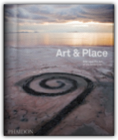


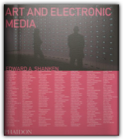

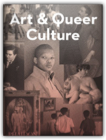














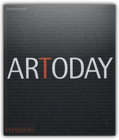


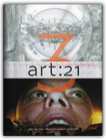
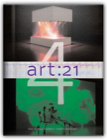












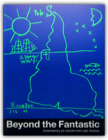













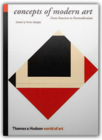


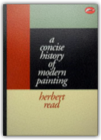



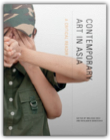





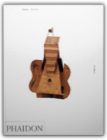






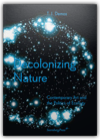

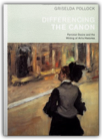









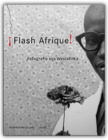





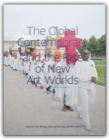



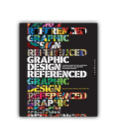



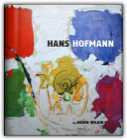

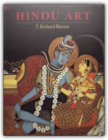

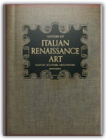
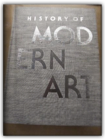
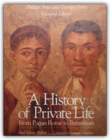





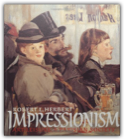





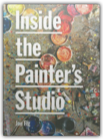
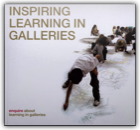

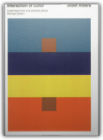


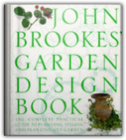





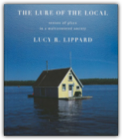
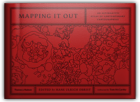



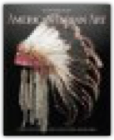



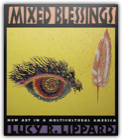




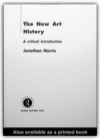
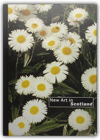





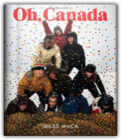




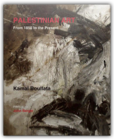

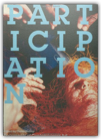









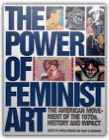


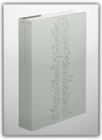





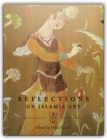














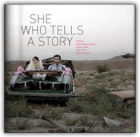
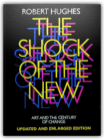


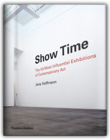
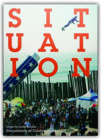
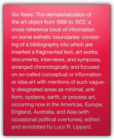


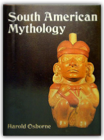




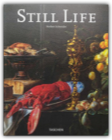


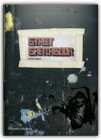




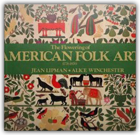








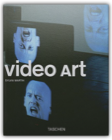


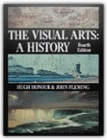

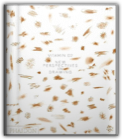
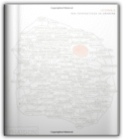
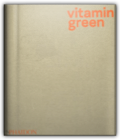


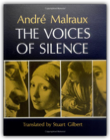

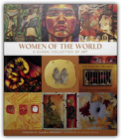

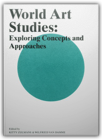

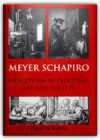


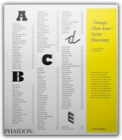


 Made with Delicious Library
Made with Delicious Library